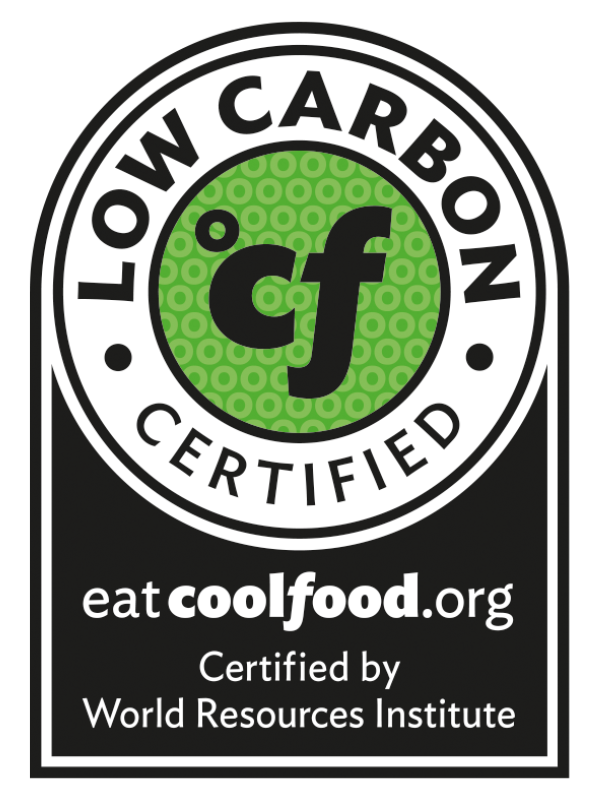iDE Tackles Poverty in Rural Communities with Women-Founded Startups


(Image: Clay Banks/Unsplash)
Female founders are underrepresented in both entrepreneurial and investor roles. They receive just 2.1 percent of venture capital investments, according to Pitchbook market data. This imbalance represents a missed opportunity for innovation and economic growth and has an outsized impact on rural communities that are further away from entrepreneurial resources.
International nonprofit, iDE is dedicated to ending poverty and creating income opportunities for rural communities that are susceptible to this lack of female representation. The ogranization brings together women in less-developed countries with female venture capitalists. Businesswoman and philanthropist, Linda Porter-Cox has served on iDE’s board for six years. In an interview with TriplePundit, Porter-Cox explained how the organization is creating financial prosperity for the communities it operates in.
"There were a lot of factors that really helped me recognize that iDE was a good fit for me,” said Porter-Cox, who is also iDE’s fund development co-chair. “And the most important, I would say, is their focus on long-term transformative and sustainable impact.”
She describes iDE’s work as empowering entrepreneurs to end poverty while enabling, teaching and engaging them in activities that create sustainable outcomes for people and their communities. Since her board tenure, she has learned that women entrepreneurs are key to household prosperity.

Income generated through entrepreneurship contributes to social welfare and reducing poverty. Research reveals a correlation between female entrepreneurship and economic development, gender equality and poverty alleviation. Women entrepreneurs tend to allocate their earnings more towards household expenditures including childcare more than men.
"Fundamentally, everyone should have the opportunity to achieve financial independence,” said Porter-Cox.
iDE’s impact on local entrepreneurs
Over 85 percent of rural Ghananians lack proper sanitation, causing illnesses among adults and developmental issues for children, according to iDE. Sama Sama, a social enterprise supported by iDE in Ghana, was launched in 2016 to provide affordable sanitation and hygiene solutions for low-income communities. The enterprise stemmed from a partnership between iDE and Global Affairs Canada with the aim of developing and selling improved toilets in northern Ghana.
Female entrepreneur Adam Adamu participated in Sama Sama and launched her own toilet business, Rida Enterprise, named after her daughter.
"I was struggling with my income,” Adamu told TriplePundit. “That was the main reason why I joined [iDE] because I come from a nuclear family of seven and I'm the firstborn, and it was my responsibility to assist my siblings. Joining iDE has improved my life."
Adamu receives client acquisition and maintenance support through the enterprise. The organization's support helped her progress from being a low-income earner to a middle-class earner. And her success has garnered praise from community members, especially women, she said. For the future, Adamu is working towards operating her shop independently by selling and carrying her own materials and expanding her business to acquire her own customers.
Ongoing support is key to building strength and stability against poverty
iDE is uniquely working with the purpose and foundation that entrepreneurs can change their community. The solution is not to provide one-off support to tackle poverty but to enable entrepreneurs to solve problems independently and develop lasting resilience against poverty. What sets iDE apart from other nonprofit organizations is its use of human-centered design: iDE thinks globally and acts locally, Porter-Cox told 3p.
“Our organization builds empathy at that local level and design solutions that are the right fit and have the right to succeed,” Porter-Cox said. “Be it in a specific country, a specific community and for a specific area.”
Corporate Composting Could Take Off With New Tech That Removes the 'Ick Factor'
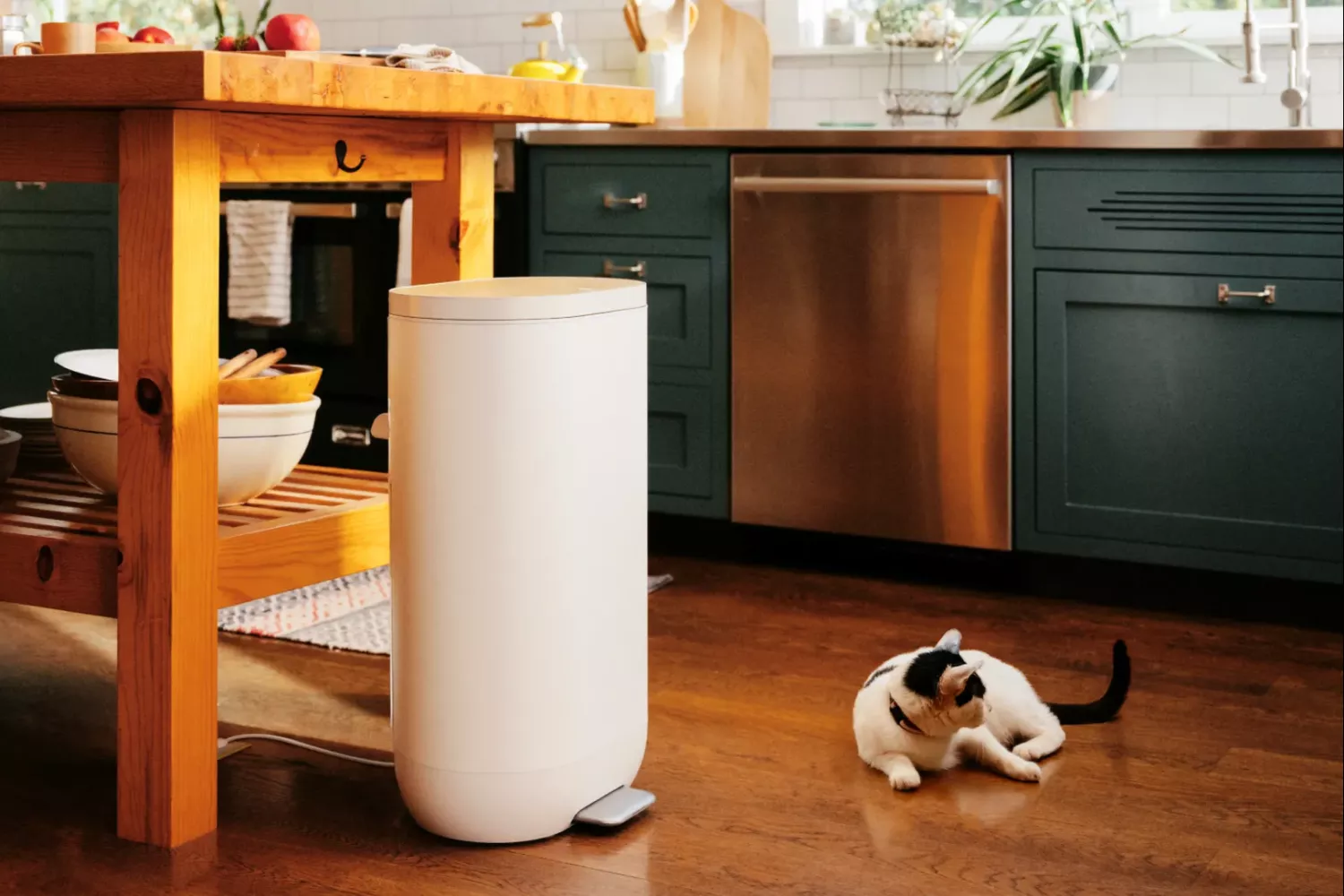
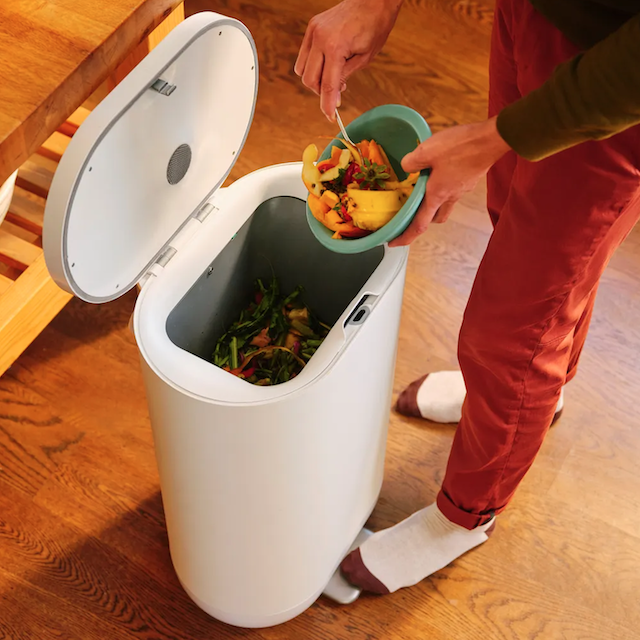
(Image courtesy of Mill Industries.)
Composting food scraps is an effective step that individual households can take to reduce greenhouse gas emissions attributed to food waste and return valuable nutrients to the soil. Though home composting has been slow to gain traction in the U.S., the emerging intersection of new waste management policies and new technology could accelerate the trend and engage office kitchens, too.
Taking the "ick factor" out of food recycling
Notably including New York City, some U.S. jurisdictions are beginning to adopt curbside food waste pickup regulations into their recycling programs. Curbside food waste pickup is a significant step towards reducing greenhouse gas emissions because it enables all residents to compost their scraps, regardless of whether they have a garden, instead of sending them to a landfill or incinerator.
While curbside pickup addresses the garden access problem, it does not account for resistance due to the "ick factor." In the U.S. and elsewhere, widely accepted hygiene standards dictate against storing rotting food in the home or yard.
“Nobody wakes up and says 'I’m excited to waste some food today,' but your options — especially in urban areas — are challenged by what the industry calls the 'ick factor,'” explains Harry Tannenbaum, co-founder of the food recycling company Mill Industries.
In a recent conversation with TriplePundit, Tannenbaum noted that many households are discouraged from composting, mainly due to the risk of attracting fruit flies and other pests. Unpleasant smells and the mere thought of keeping decayed food close at hand are additional obstacles.
The technology solution
Mill Industries’ solution is Mill, a compact, odor-free kitchen appliance that dehydrates food scraps and processes them into clean, dry grounds. The system is designed to handle meat and dairy waste as well as plant-sourced scraps.
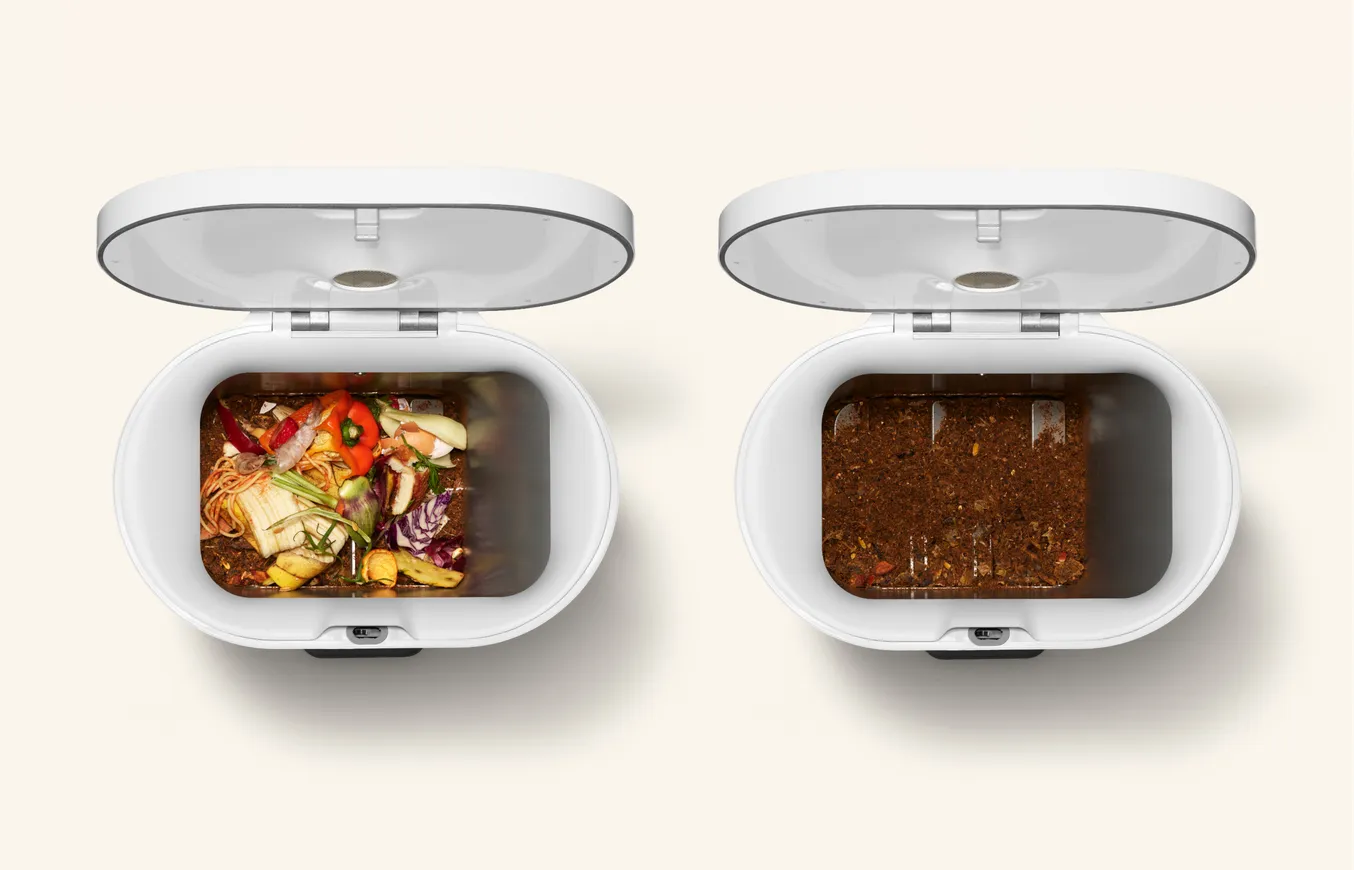
The system’s sensors enable it to operate automatically, based on lessons learned from Tannenbaum’s previous experience with the leading smart home firm Nest. The goal was to develop a clean, seamless, and convenient way for households to keep food scraps out of the general waste stream.
“What we learned at Nest is that we need to build things that are better, faster, cheaper, make sense in kitchen, and with less smell and less work,” Tannenbaum told TriplePundit.
Another lesson learned at Nest is the importance of providing users with data and feedback. The Mill weighs incoming food, enabling users to track how many pounds of waste they divert to composting.
Once the food is reduced to dry grounds, it can be spread directly around a yard and garden, incorporated into a compost pile, or added to a curbside food waste recycling bin.
For customers without any of those options, Mill fostered new options with community partners and other stakeholders. In Phoenix, Arizona, a local farmer has agreed to pick up grounds from households. The company also partners with organizations in New York City to link its customers with local community gardens.
As an additional option, the U.S. Postal Service will ship the grounds from the customer to a composting facility.
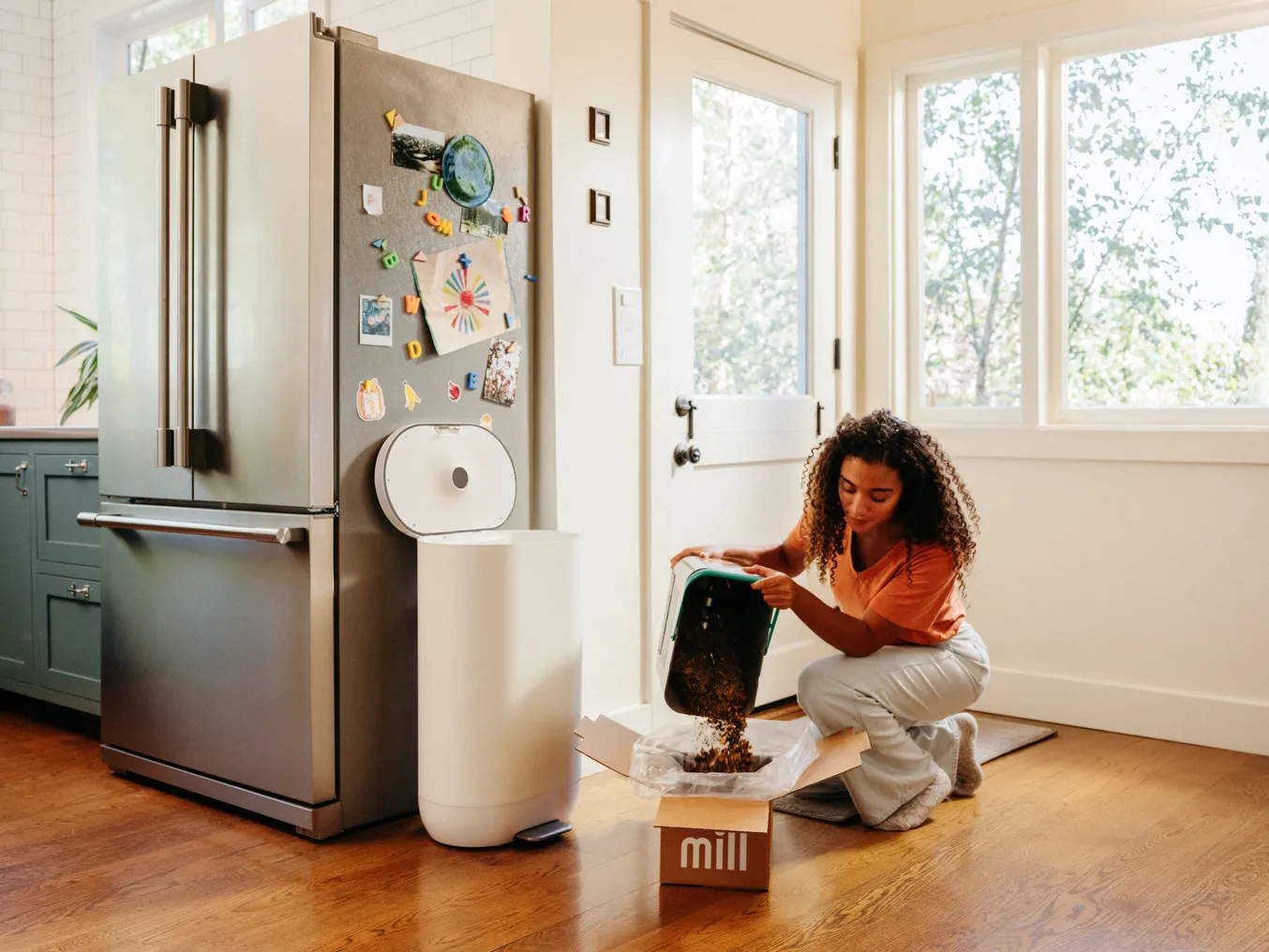
Access to next-level food waste recycling
Composting is an environmentally acceptable way to reduce food waste, Tannenbaum said. But re-purposing food waste for animal feed yields even bigger environmental gains.
The animal feed option is emerging for Mill Industries’ customers. Earlier this year the Washington State Department of Agriculture approved the distribution of the company’s grounds as an ingredient in poultry feed, the first such commercial application of household-sourced food scraps.
The latest food waste-reducing technology is not for everyone, though. A rental option is available for the Mill, but the retail price is in the range of $1,000.
Opportunities for businesses
The high cost of a high tech food waste converter is beyond the reach of many households, but it can be a good fit for companies in search of new additions to their environmental program budget.
As applied to office use, new composting technology can help employers spark discussions about food waste in general. Apart from the benefits of composting, the conversations can include strategies for reducing food waste at the source and saving money on groceries, including cooking with leftovers, right-sized portions, and planning ahead for meals and grocery shopping.
Every kitchen makes a difference
With global attention focused on big-picture solutions to the climate crisis, companies can also deploy composting to focus attention on the key role of individuals in reducing food waste.
Food waste is both a hunger problem and a greenhouse gas problem. The United Nations estimates that roughly 30 percent of the world’s food is lost to waste. Roughly 13 percent of that loss occurs between harvesting and the retail stage and 17 percent is attributed to retail, food service, and household use, indicating that individual habits can make a significant impact on food waste.
The importance of the individual kitchen is underscored by a 2019 food waste study conducted by the EPA. Still cited today, the study found that 66.2 million tons of food waste occurred in the U.S. in 2019 from the food retail, food service and residential sectors. Households alone accounted for 40 percent of that figure.
The "ick factor" may never go away completely, but companies can help push it to the side by introducing their employees to new solutions that help them make an impact on the global food waste crisis, one kitchen at a time.
A Free Tool is Bringing Farmers and Buyers Together to Eliminate Food Waste
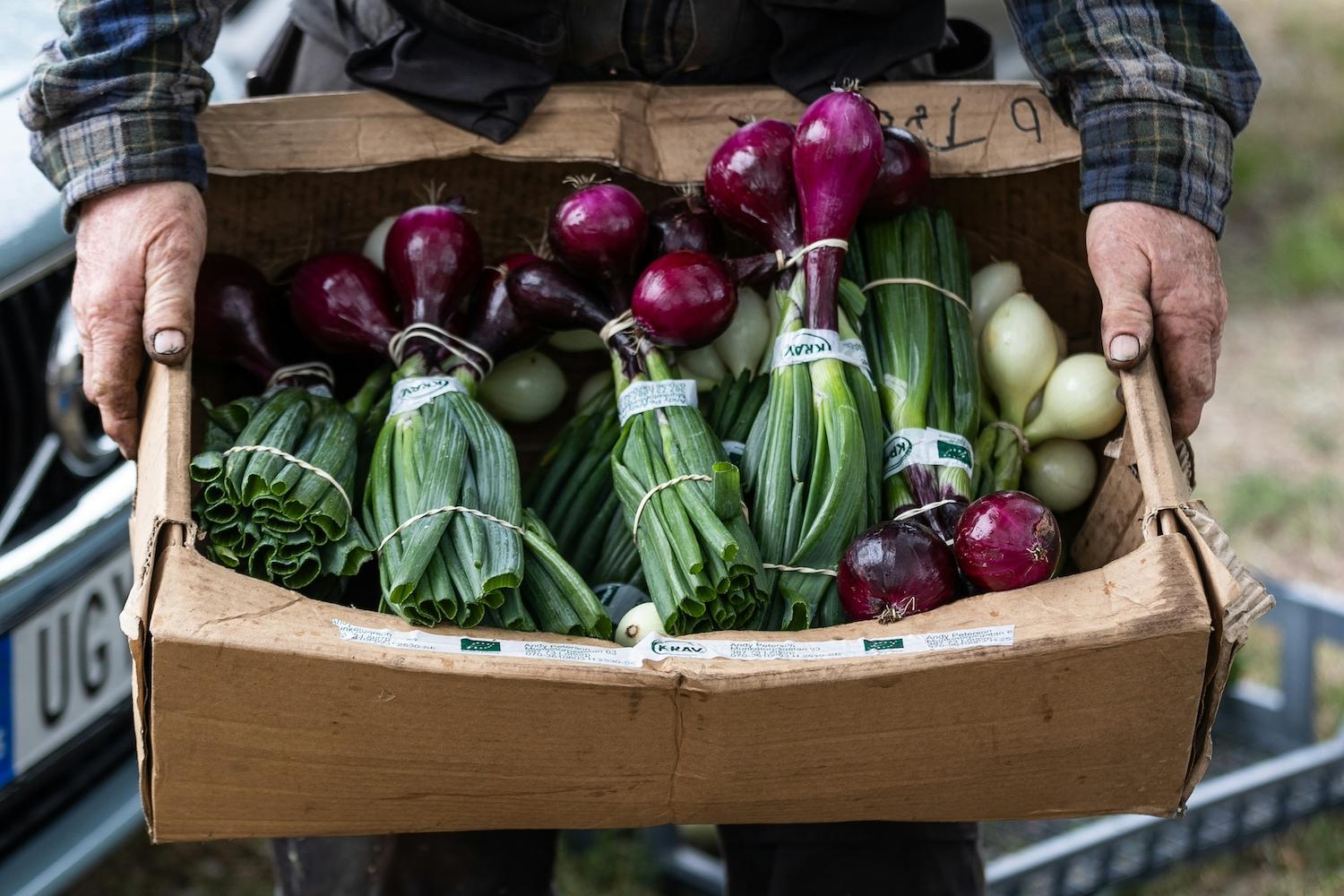
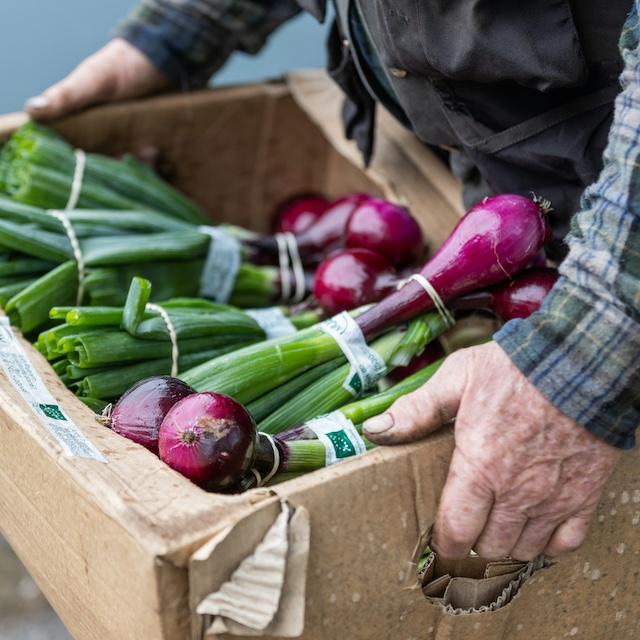
(Image: Carl Tronders/Unsplash)
An estimated 2.5 billion tons of food goes uneaten every year, and a sizable portion of that waste never leaves the farm, according to research from the World Wildlife Fund (WWF). About 15 percent of the food wasted globally is lost during and around harvest. That’s 1.2 billion tons of food. A new, free tool from WWF aims to reduce that number, which could go a long way toward addressing food insecurity and lessening environmental ramifications.
“We care about shrinking the footprint of food [and] using more of what is already being produced,” Alex Nichols-Vinueza, the director of food loss and waste at WWF, told TriplePundit. “We have this overproduction today where almost 40 percent of what we produce goes to waste — and all of the associated impacts around biodiversity loss, conversion [to farmland], water use, greenhouse gas emissions that come with it.”
New tool empowers partnership between growers and buyers
WWF’s Global Farm Loss Tool doesn’t just measure waste, it breaks it down into categories to help growers see just how much food they're losing and where they're losing it, Nichols-Vinueza explained. Since growers can’t solve the problem on their own, that categorization helps growers and buyers work together to get more food out of the field and onto consumers’ plates.
“[It’s] meant for growers to work with buyers, to work with partners, to then come up with these solutions,” he said. “We've done the research where just growers go out into the field and measure but … they can't just take action on their own.”
Buyers, brands and retailers benefit by reducing the environmental impacts and emissions throughout their supply chains.

Solutions are customized for the cause
The tool breaks waste down into marketable, edible and spoilage categories. Each type of loss happens for a different reason and necessitates a different set of solutions. Marketable loss includes fruits and vegetables left in field because of a lack of interested buyers, inclement weather that disrupted the harvest, a shortage of laborers available to complete the harvest, and produce missed by pickers, combines or other machinery, Nichols-Vinueza said.
The edible category consists of foods that are left in field because consumers are likely to reject fruits and vegetables that are scarred, misshapen or the wrong size. While there’s always the hope that consumers will learn to accept edible fruits and vegetables that are not aesthetically perfect, that process can take time to scale up. But there are other solutions, such as selling that produce to cafeterias or food service companies. For example, strawberries that are too small can be distributed to cafeterias, where they can be cut up and served in fruit salads or parfaits without their size being noticeable to consumers, Nichols-Vinueza said.
Additionally, the tool focuses on solutions like upcycling food that would otherwise be wasted surplus and creating new processed foods, he explained.
As far as spoilage is concerned, there are plenty of options outside of sending it to a landfill. It can be composted and used as fertilizer, which could reduce the need for fertilizers by 30 percent and offset their rising cost, Nichols-Vinueza said. And spoiled fruits can be processed for their sugars.
“We're really positioning this [tool] as a piece of that regenerative transition because if you go back to the origins of regenerative agriculture, nothing in nature and nothing in those systems was wasted,” he said. “We're really trying to make sure that, as part of that overall more circular and regenerative system, we're bringing a focus to using more of what we grow. Obviously to feed people first, but then to offset some of our production costs.”
Labor market limitations
Fruits and vegetables are very labor intensive to harvest and produce. The agricultural labor market is limited and expensive, often leaving farms without enough labor, Nichols-Vinueza said.
“We want to get more of what we produce to people, so we're really focused on how do we find an economically profitable way for growers to be able to justify … labor,” he said. “We often get [asked] when we're at events and talking about the work we do on farm, ‘Well why don't you just donate the food?’ And I think every grower would love to see all of their products eaten. It breaks their heart to not be able to use all this food after all the work that went into producing it.”
But both the cost and shortage of labor mean it’s often more economically feasible for growers to leave marketable produce in field, even if it could be sold or donated. Unfortunately, the agricultural labor market is unlikely to improve in the U.S. — especially considering growing anti-immigrant sentiment. This presents a significant challenge to growers who hope to significantly reduce waste.
An example in action
Since the Global Farm Loss Tool is new, evidence is still limited. However, one grower who has used the tool worked with a buyer to reduce waste to an astonishing 0.6 percent by offering their product at a variety of qualities and price points.
“They've got their top-grade fresh apples,” Nichols-Vinueza said. “They've got their bagged apples for a little bit more of a discount. They've got bins of apples if you want to create sauces and pies. And they've got their imperfect line for more of a discount. They've really gone through and, with the partnership with the buyer, established these different products. And that's the end result. They've really been able to reduce a significant amount of their waste.”
Although it will take a while to see more results, it’s a promising example of what the industry can achieve with the right tools and dedication to eliminating waste on the farm.
Phononic’s New Cooling Technology Reduces Grocery Store Emissions
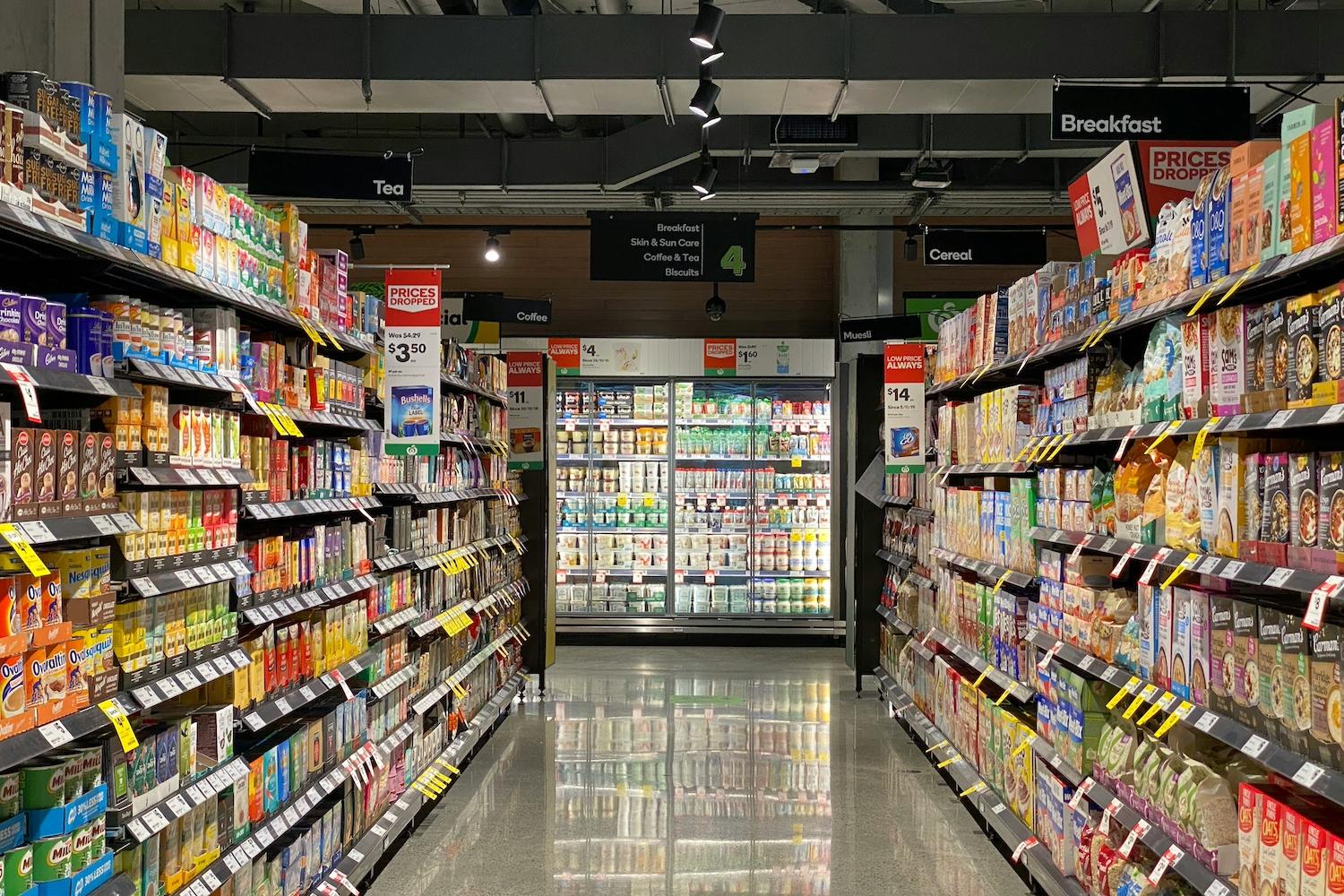
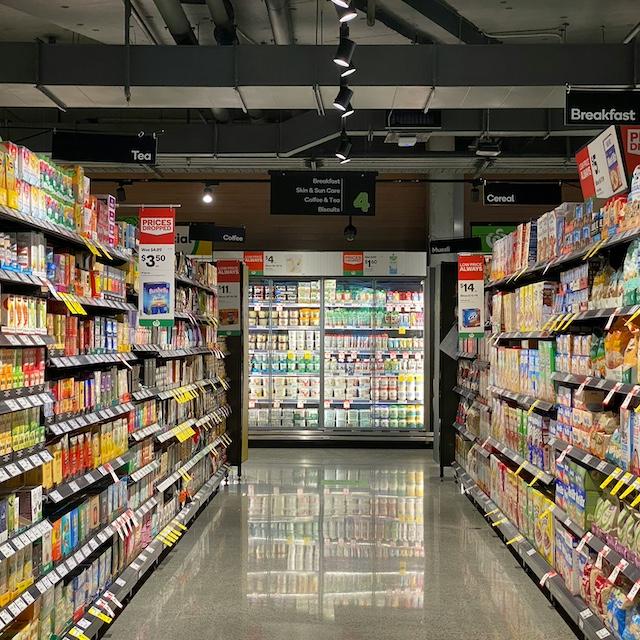
(Image: Franki Chamaki/Unsplash)
The refrigerant gases commonly used to keep the freezer and cold sections of grocery markets at the right temperature contain hydrofluorocarbons, chemicals that can be hundreds to thousands of times more powerful greenhouse gases than carbon dioxide. Consequently, federal and state governments are seeking to regulate their use, which could mean big changes for a lot of businesses. In response, some of the largest grocery chains in the country are switching to natural refrigerants — like ammonia, carbon dioxide and propane — to reduce their environmental impact.
Phononic, a company specializing in heating and cooling technology, developed a cooling option that doesn’t use refrigerants, and it appears to be well suited for an increasingly popular form of grocery shopping: curbside and delivery orders.
“The problem with e-commerce purchasing, particularly online for pickup and delivery, is the grocer can’t predict your behavior and that makes warehousing particularly problematic,” Tony Atti, co-founder and CEO of Phononic, told TriplePundit. “The minute they build a fixed, refrigerated or frozen warehouse, they’re either using a small percentage of their capacity or exceeding the capacity, and they have no flexibility.”
The company is named for a solid-state cooling process that doesn’t rely on moving parts or fluids like traditional refrigeration systems. Instead, it utilizes the principles of thermoelectricity to transfer heat away from an object or space. Phononic created moveable freezer and refrigerator totes for picking and storing online orders while saving space in-store. This technology is more sustainable and cost-effective because it doesn’t use traditional refrigerants and the totes’ temperatures can be customized, so stores are only cooling products that need to be and aren’t cooling empty totes.
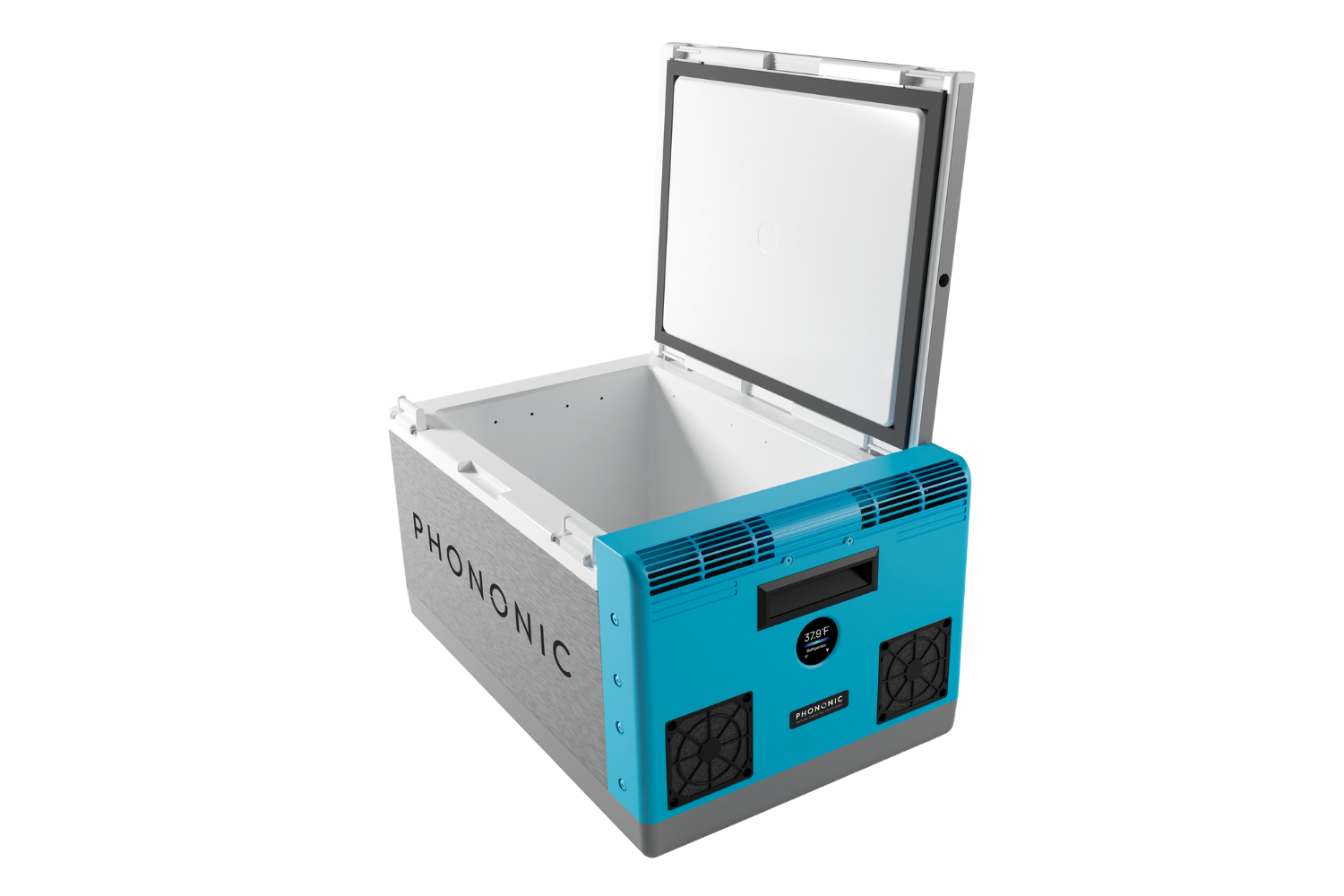
Traditional freezer and cooling systems involve mechanical compressor-driven pumps that use the expansion and contraction of refrigerant gases to generate coldness and blow that coldness across a surface to cool it, Atti said.
“Thermoelectric, semiconductor cooling is a complete inverse,” Atti said. “We pull heat out as opposed to pushing cold in. When you do that, you have a very elegant, very uniform, and consistent level of temperature — as compared to the mechanical, sort of, brute-force method.”
With grocery stores of all sizes establishing or scaling online purchasing platforms for their customers, the dilemma is twofold, Atti said.
“You don’t want to mess up the in-store purchasing experience for people that like to go to the store,” Atti said. “Instead, the grocer has to take a portion of the real estate and dedicate it to fulfillment, which is a fancy word for ‘Where do we pack your order?’”
The fulfillment area needs its own sets of refrigerators and freezers for goods that need to be kept cool, Atti said. Those are often fixed, expensive, unsustainable, and require separate power from the rest of the store.
Phononic’s totes, on the other hand, are part of an “ecosystem of accessories, racks, carts and data monitoring” that tells the grocer where the order is at every point of the fulfillment cycle, Atti said.
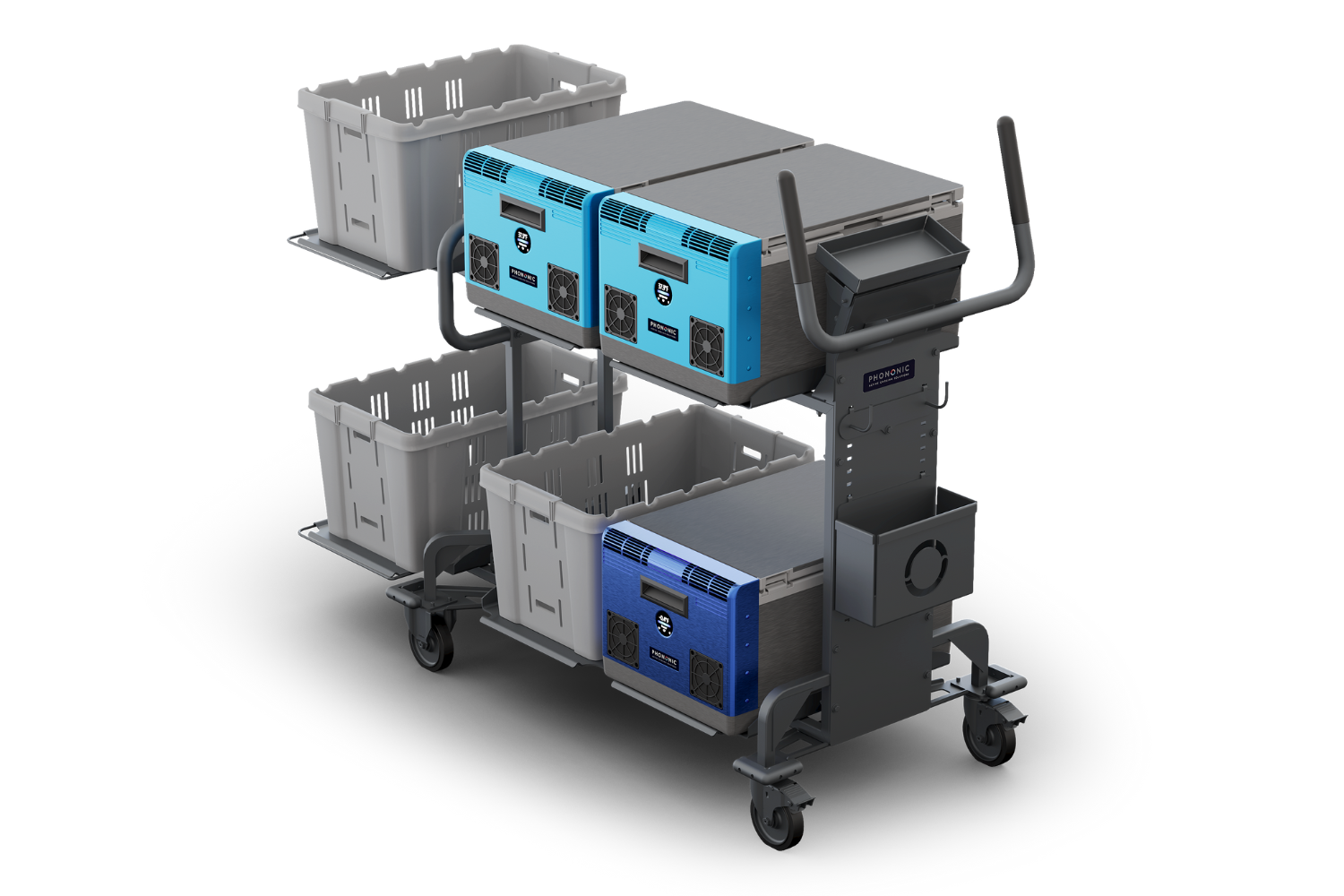
“So, the grocer now has an incredibly flexible allocation of their space that can accommodate orders in real-time as opposed to a fixed ordering capacity using the legacy technology,” Atti said.
Phononic’s freezer and refrigerator totes can deliver energy savings from 30 to 70 percent over fixed, stationary refrigerator units, he said. In many cases, grocers also saw labor savings of 50 to 60 percent.
“Then at the same time in several stores, we’re seeing significant incremental revenue growth from just that fulfillment area,” Atti said. “It’s a really unique way to impact three significant areas of operation: first sales, then labor, and third, the infrastructure footprint or, more directly, the energy bill.”
But solid-state cooling technology has its limitations, including lower cooling capacities compared to traditional methods and higher costs for certain applications. Phononic and other companies are conducting ongoing research to overcome these limitations and expand the use of solid-state cooling in multiple fields, including electronics, medical devices and consumer appliances.
How Asian Americans Can Break the 'Bamboo Ceiling' By Turning Cultural Experiences Into Leadership Superpowers
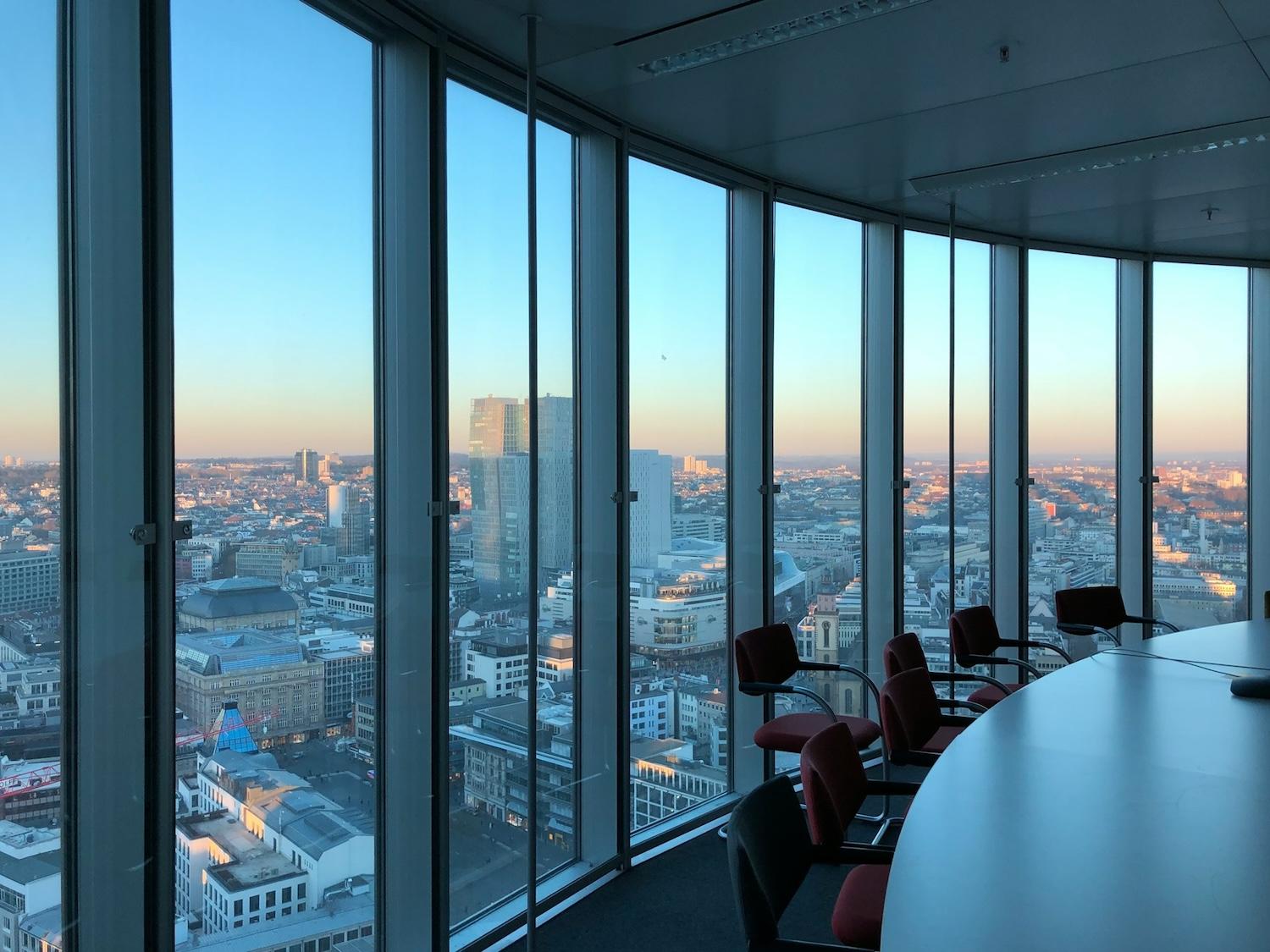
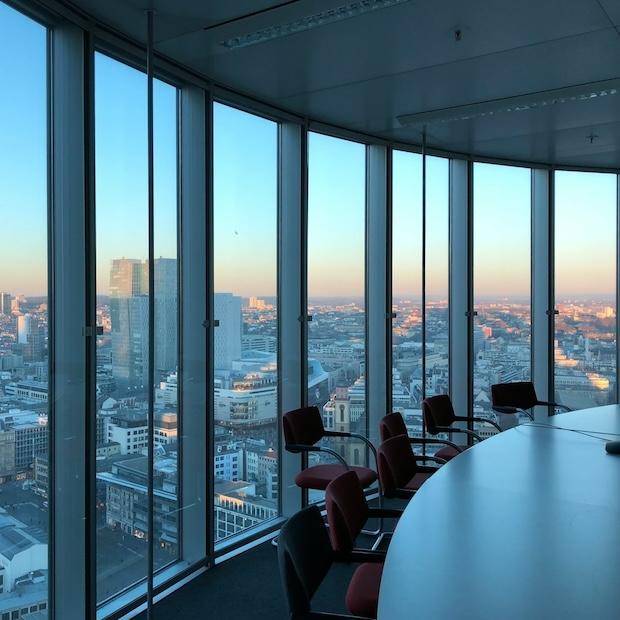
(Image credit: Yibei Geng/Unsplash)
Women and people of color are still far less likely be promoted to senior ranks in their workplaces compared to white men. Though they are the fastest growing ethnic group in the United States, Asian Americans face outsized challenges in being promoted at work, a phenomenon sometimes called the bamboo ceiling.
A widely cited 2017 study from the Ascend Foundation, which analyzed employment data from across the U.S., found that Asian Americans were the least likely group to be promoted to top roles. Years later, Asian Americans are still significantly less likely than their white, Black and Latino peers to say "there are others like me in leadership positions" at their organizations, according to a 2023 survey.
Jane Hyun, a global leadership strategist and coach for multinational companies, schools, and nonprofit organizations, coined the term "bamboo ceiling" to describe the Asian-American workplace experience in her bestselling 2006 book, “Breaking the Bamboo Ceiling: Career Strategies for Asians."
Akin to the "glass ceiling," a term used to describe the largely invisible but ever persistent barriers that hold women back from career advancement, the nuances of the bamboo ceiling touch on complex factors like individual identity, cultural experiences and company values.
"Many Asian Americans have been socialized in a more collectivistic and group-oriented family background," Hyun explained. "But in a largely individualistic setting, such as the U.S., companies tend to value individual expression. They like the people who speak first in a room and take initiative. That's very much valued — so much so that even introverts feel they're at a disadvantage because they're not the first to speak up. It’s not just Asians who are disadvantaged in that kind of setting."
While seeing the world differently than those around you may at first seem like a hindrance, it can actually be an asset for business leaders. That's the focus of Hyun's follow-up book, “Leadership Toolkit for Asians: The Definitive Resource Guide for Breaking the Bamboo Ceiling,” which hit the shelves this spring nearly two decades after her seminal research on the topic.

Understanding the bamboo ceiling
Hyun interviewed 100 leaders across backgrounds for her 2006 book to understand how they advanced from entry-level to senior roles at their companies. She identified three distinct phases each passed through on their rise to the top.
The first: the producer. "They worked a lot of hours, they put their heads down, and that was the only expectation of what they had to do," Hyun explained. Next up is building relationships and credibility. In other words: "Are you liked and trusted by people in the organization — not just in your own department, but also other groups?," Hyun said. Finally comes an influencer and owner mindset, she explained: "Do you think about the good of the whole company and lead with that kind of organizational mission and values in mind?"
Reviewing the stories she heard from leaders, "what I found was that Asians spent a lot of time in that first stage — not only because they didn't know they had to do the other stuff, but also because of some of the cultural reasons: the whole idea of putting your head down and having discipline," Hyun said. "The need to promote yourself and get out there was not something they thought they needed to understand."
The leaders' experiences also confirmed the ubiquity of what she saw firsthand. "This was a book I wish I had when I was entering corporate America," Hyun said. "My parents did not grow up in the American system. They didn't know the playbook for how to navigate inside this Western setting. They never worked here before. So, everything I had to learn when I worked in corporate America, I had to learn for myself. And it was hard. I learned the hard way."
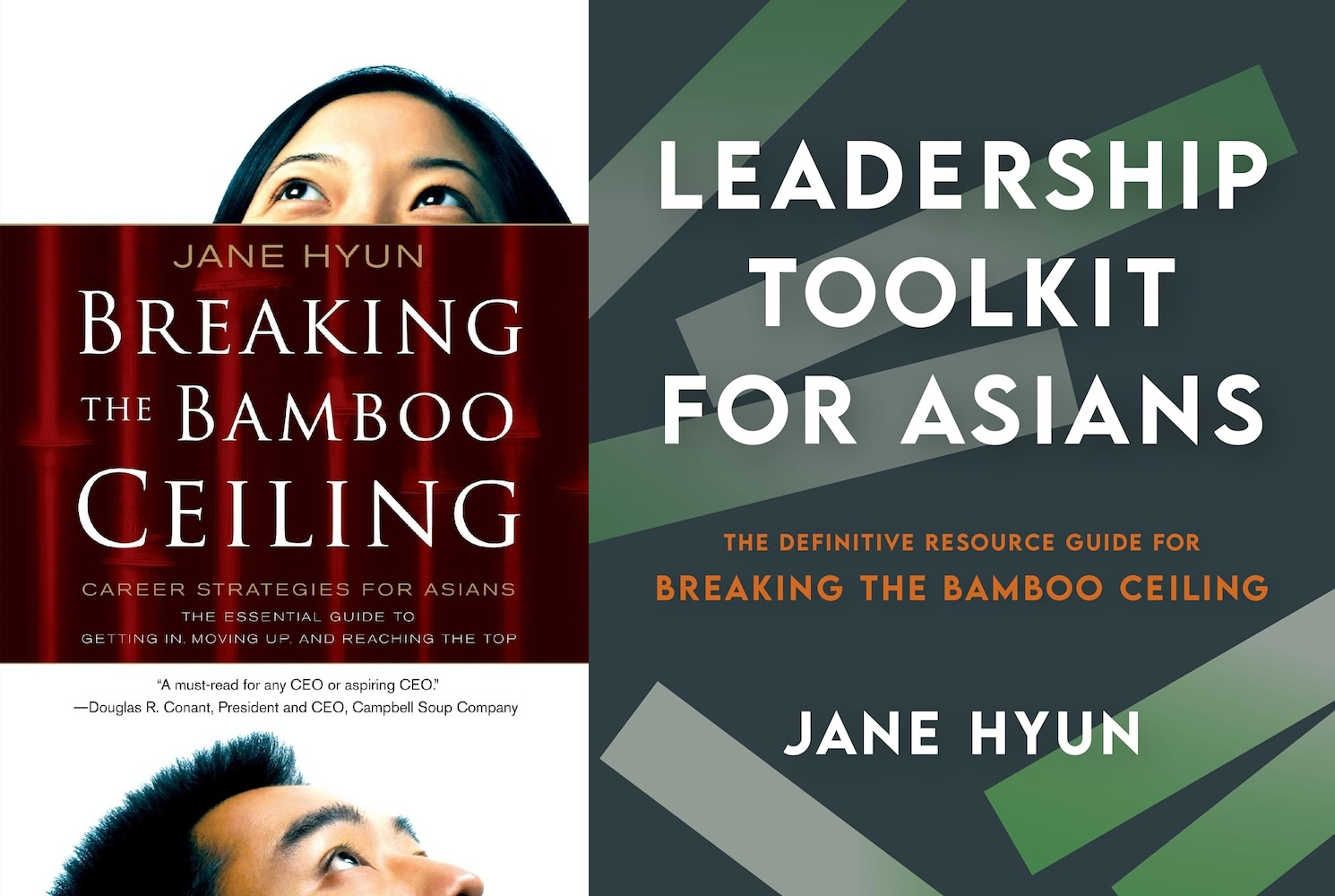
Breaking through the bamboo ceiling by leveraging cultural experiences as leadership assets
Hyun's second book draws on her time spent coaching thousands of leaders across five continents to help them build their skills and grow their careers. "When you work with people for 10, 12, 15 years, you see growth and you see transformation," she said. "I wanted to share some of the secrets they learned and insights they learned about how to bring all of themselves to the table as leaders versus trying to hide."
Indeed, Asian Americans on average “feel less able to be themselves” in the workplace and feel they receive “less support at work than their white peers," according to research from McKinsey.
Much of this traces back to cultural identity and how different cultures define high performance and success, Hyun said. "I grew up in South Korea. I went to school there for a couple of years, which is a very different system," she remembered. "Even in that early third-grade classroom, when I was going to school for the first time in the U.S., I realized: 'Wow, this is a whole disorientation for me. Now I'm going to be rewarded for a different set of behaviors. How do I make that work in this new culture in a way that I can be myself?'"
The struggle to belong and understand what's expected often translates to how Asian Americans, and others from underrepresented or immigrant backgrounds, show up at work.
In her second book, she aims to inspire professionals who feel stuck with the stories of others who've broken through. "Early on in their careers, they felt like, 'If I'm going to be successful at this company, in this kind of an aggressive and competitive culture, I need to twist myself into this shape or fit into this shape in order to be accepted and be taken seriously,'" she said of the leaders she featured. "They realized they were going along to get along versus thinking about, ‘How do I lead in a way that's culturally authentic to me, and what does that look like?’ I wanted to share those stories because I wanted to show people it was possible."
The concept of leveraging cultural experiences as leadership assets is a recurring theme in what these leaders learned. "People might be wondering: What does that mean?," Hyun said. "The first thing you need to do is examine what your cultural values are and what makes you who you are, beyond just what you look like."
This includes things like "how your early socialization and how cultural values and messaging has affected the way you lead and influence," she said. "Instead of suppressing them, instead of putting them aside, how do we start to awaken some of that?"
For example, having a more collectivist mindset in an individualistic workplace may not seem like an asset, "but it could be helpful for consensus-building, for knowing how to resolve conflict and being skilled at marrying the perspectives of the people in the room," Hyun explained. "You’re not the one making an individualistic decision and everybody hates that decision. We all know people like that — my way or the highway, really outspoken. They get out there, they're in charge, but they don't really make a lot of friends. They're not good at bringing people along with them when they have a difficult decision to make."
Leaning into what makes them different, rather than "going along to get along," has helped some of the leaders featured in Hyun's book rise to the highest levels of their organizations. "I've seen Asian leaders really do this skillfully, but they have to tap into what they have and not see their cultural values as something to be ashamed of," she said. "It's something that could be a cultural strength."
While individuals wield more power over their workplace experiences and career trajectories than they often realize, of course there is only so much an individual can do in the face of a system that is not inclusive. A growing number of employees, particularly younger generations, would rather quit their jobs than struggle in a company culture they find toxic — which poses a real recruitment and retention risk for companies that don't take inclusion seriously.
"The reason why it's hard to create inclusive cultures is that people often struggle to even see the differences that need to be understood," Hyun said. "We need to work on our own cultural biases and lenses in order to see things from another person's lens."
Launched last year by her leadership consultancy Hyun and Associates, the Culturally Fluent Leader Academy is a virtual and in-person learning experience that aims to counter these longstanding challenges and foster more inclusive cultures that allow for people of all backgrounds to truly thrive.
For Hyun, it's the latest step in a personal mission to make the workplace transition easier for people who face experiences similar to her own. "My life has always been about navigating from the foreign to the familiar, and then from the familiar to the foreign, and helping others to do that," she said.
Skyscrapers Can Make a Statement About Sustainable Design


The Burj Khalifa in Dubai, the world's tallest building. (Image: Alla Rome/Unsplash)
Even with the climate crisis looming ahead, local governments continue to approve taller and more elaborate skyscrapers, each one trying to outdo the others to capture the attention of the world. That raises many questions about the misuse of materials and energy resources. But, with the help of new technologies, architects and developers can deploy tall buildings to make a statement about sustainable design in a changing world.
Tall is beautiful, but not necessarily good for the planet
In recent years, beauty in design has become the traditional lens through which tall buildings are judged. In December, Architectural Digest posted a photo gallery of 31 skyscrapers rated as the most beautiful in the world. “From the world's tallest building, the Burj Khalifa, to the more modestly sized Agbar Tower, these structures all share one common trait — stunning design,” wrote reporters Hannah Huber and Elizabeth Stamp.
They also note that the focus on beautiful design is a relatively new phenomenon. In past years the objective was simply tallness for its own sake, with predictable results. In 2018, for example, Architectural Digest name-checked 29 of the “ugliest skyscrapers from around the world.”
Now that sustainability is the focus of attention, another evolution in skyscraper design is emerging. But advocates for tall buildings still need to make a strong environmental case for building up instead of out.
That may prove difficult. One argument in favor of skyscrapers is that taller residential buildings enable cities to grow in population while conserving precious open space. However, a widely-cited lifecycle greenhouse gas analysis published in the journal Nature suggests that trading land for height does not result in greenhouse gas savings. The findings support building more densely at lower levels, rather than building upward.
In addition, the proliferation of new cloud-piercing structures is a thumb in the eye of the general public. At a time when people are urged to recycle, reuse, re-purpose and conserve resources, some tall buildings send a message of excessive consumption.
For example, the new Liebian International Building in Guiyang, China, caught attention for incorporating a 354-foot artificial waterfall into its façade. The developer said it took steps to reduce the environmental impact, such as using recycled rainwater, and the plan is to run the waterfall only on special occasions. Still, the overall effect was seen to de-emphasize the importance of conserving water and energy, too.
Overall, the United Nations Environmental Program warns that the construction industry is far offtrack from the goals of the 2015 Paris Agreement to limit global temperature rise, despite the use of alternative materials and an increased focus on energy efficiency.
Incorporating nature into tall buildings for more sustainable design
Despite the challenges, there is room for improving the environmental footprint of tall buildings. Huber and Stamp of Architectural Digest noted the confluence of artful design with engineering innovations that enable the construction of ever-taller buildings. In terms of sustainability, the next step is integrating new clean energy technologies and other innovations into skyscraper design.
That trend is beginning to manifest in buildings that adhere to the Leadership in Energy Efficiency and Design (LEED) green building certification standards and other established guidelines.
Standing at 828 meters, or nearly half a mile, the Burj Khalifa in Dubai is often mentioned as an example of the heights to which the LEED sustainable design standards can be extended.
Officially opened in 2010, the building features green spaces and energy-saving design elements that deploy natural systems, including a tiered facade to prevent wind vortices and a sunlight-reflecting curtain wall. Other clean technology innovations include on-site solar panels, an energy-saving air distribution system, and an irrigation system that uses water recovered from the air conditioners, National Geographic described in a paid-content article.
Electrification and a pathway for reducing skyscraper emissions
Policymakers are also driving a move toward more sustainable design. For example, a New York City law that came into force this year will phase in requirements for reducing carbon emissions from buildings, with 2030 and 2050 as the key goalposts.
Described as a “landmark climate measure” when passed in 2019, the law already motivated property owners to install innovative retrofits such as a carbon capture system for a tall building on the Upper West Side.
Developers in New York are also foregoing fossil fuels for heating and appliances. One example is a new 44-story tower in Brooklyn, which laid claim to the title of the city’s first all-electric skyscraper.
The building electrification trend provides an opening for new energy storage technologies to play a role in skyscraper design. One notable development in that area involves Skidmore, Owings and Merrill, the influential architecture firm behind Burj Khalifa, the Tianjin CTF Finance Centre in China, Willis Tower in Chicago and One World Trade Center in New York, among others.
Last week, the architecture firm and the Swiss-Irish energy storage company Energy Vault announced a collaborative effort to integrate gravity storage systems into the design of tall buildings. The storage technology involves raising solid weights when excess wind or solar power is available. When electricity is needed, gravity pulls the weights downward to turn a generator.
A typical skyscraper using this gravity system could provide enough storage for its own electricity needs and for surrounding buildings as well, according to Energy Vault. The partners also plan to collaborate on Energy Vault’s pumped hydropower energy storage system, which leverages water instead of solid weights.
Moving the needle on sustainable design
“This partnership with Energy Vault is a commitment not only to accelerate the world’s transition away from fossil fuels, but also to explore, together, how the architecture of renewable energy can enhance our shared natural landscapes and urban environments," Adam Semel, a partner at Skidmore, Owings and Merrill, said in a statement.
That remains to be seen, but if the design and engineering challenges can be worked out, the collaboration has the potential to motivate similar sustainable design partnerships among other design firms and energy innovators.
Other areas with the potential for significant impact include the “material bank” movement that encourages circularity in building design and construction and the use of more sustainable materials for indoor spaces.
When all is said and done, extremely tall skyscrapers are not the best ambassadors for a culture shift in the global economy toward an emphasis on circularity instead of extraction, consumption and waste. Nevertheless, skyscrapers can challenge architects, engineers and technology innovators to make a meaningful contribution to the energy transition and inspire others to do the same.
Brand Leaders Share Their Insights on the Future of the CPG Sector
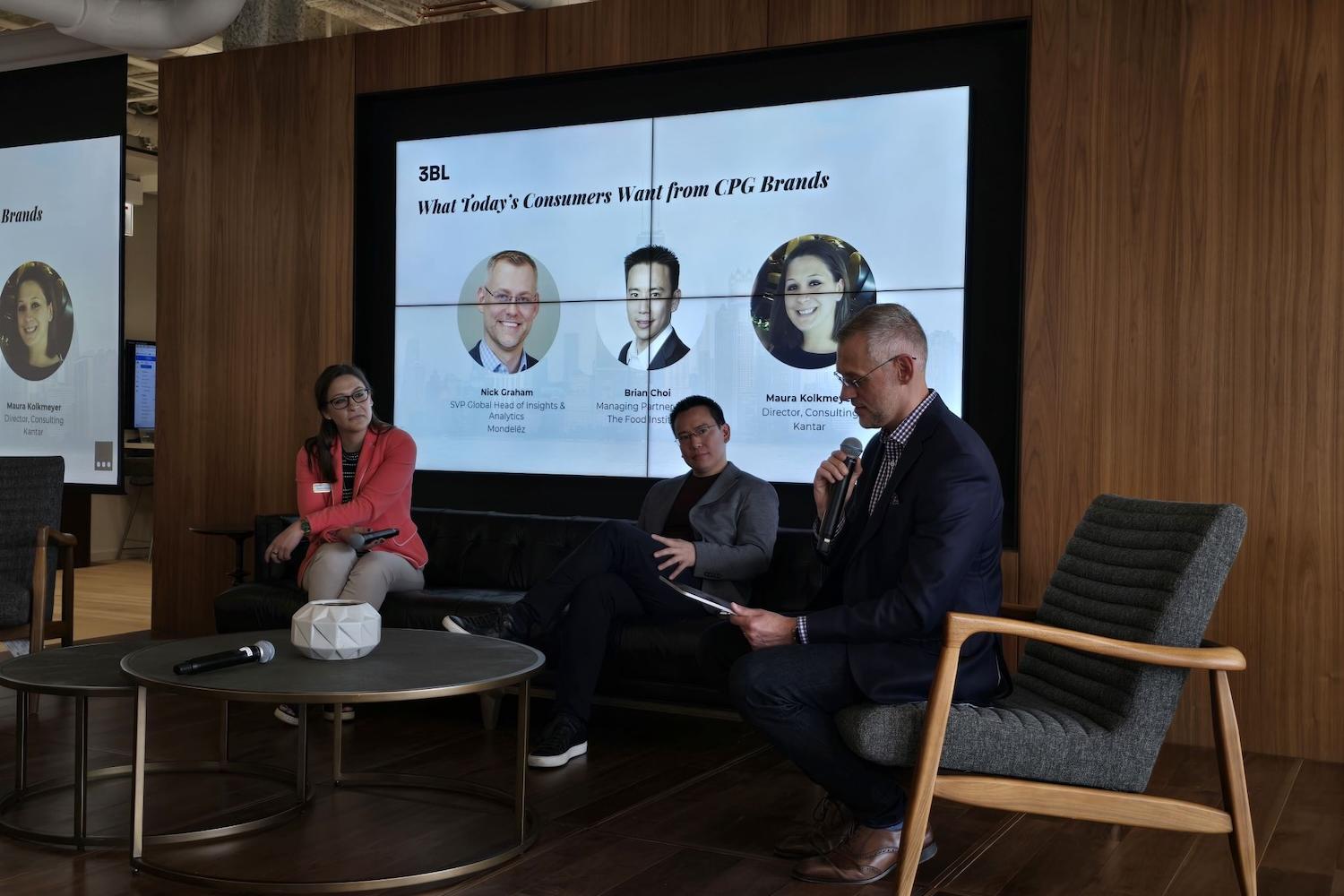
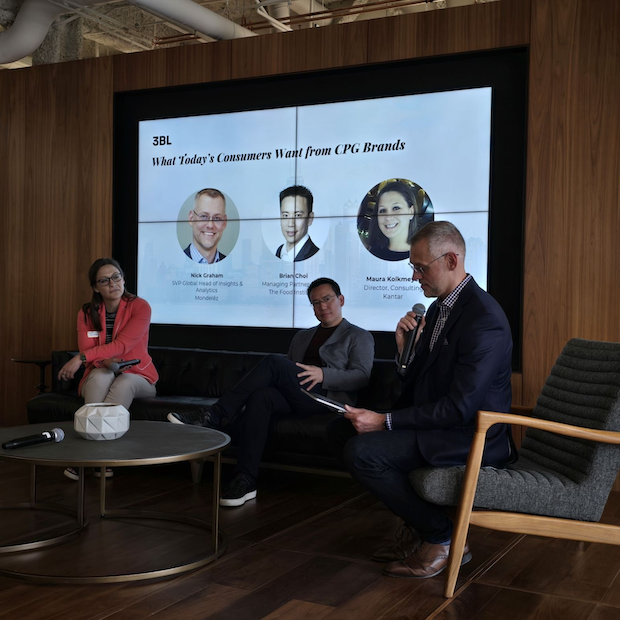
Nick Graham (right), SVP of insights and analytics for Mondelēz International, speaks with Brian Choi (center), CEO of The Food Institute, and Kantar Director Maura Kolkmeyer (left) at Mondelēz International’s headquarters in Chicago. (Image courtesy of 3BL)
Today’s consumer packaged goods companies operate in a challenging and increasingly uncertain environment. Around the world, consumers are feeling the pinch from inflation and the rising cost of living, and a growing number are also searching for products that are healthy for their bodies, convenient for their lifestyles, and gentler on the environment.
Finding a way to deliver on shifting consumer demands is a constant balancing act for CPG companies. An eye toward consumer attitudes and lifestyles can help brands differentiate themselves on the store shelf while improving their impact on communities and the environment.
Business leaders discussed these trends and more at an event hosted at Mondelēz International’s headquarters in Chicago earlier this month.
“The consumer has changed dramatically over the past five years,” Brian Choi, managing partner and CEO of The Food Institute, a trade publication and information hub for the food sector, said at the event. “We're also in a period economically where things are quite volatile. Innovation is really needed.”
Understanding what consumers want — and how to activate them
More than two-thirds of global consumers say they often choose brands that align with their values, according to Mondelēz International’s fifth annual State of Snacking report. In particular, 63 percent seek out snacks with less environmental impact, including those with attributes like local and sustainably sourced ingredients, according to the survey.
Yet within consumer sentiment research, there’s often a disconnect between what consumers say they’re looking for and what they actually purchase. Particularly as people feel the strain economically and go about their busy days working and raising their families, it’s often easier to grab whatever is closest and cheapest on the shelf.
It’s understandably confusing to brand leaders when sales don’t always match up with consumers’ stated intentions to make the healthiest or most sustainable choice. But Maura Kolkmeyer, a director at the consulting firm Kantar, has a different view on the phenomenon that’s often called the say-do gap.
“We have to be deeply, deeply curious about those tensions we see in the marketplace,” she said at the event. “What you're actually seeing in that gap between the attitude and the action is uncertainty. Just because they're not acting on it doesn't mean they don't believe it.”
In some cases, for example, consumers may head to the store and find the “healthier” or “more sustainable” product isn’t available to them locally, is outside their price range, or requires extra steps they’re not used to or comfortable with (think: having jars on hand to shop at a bulk station or bringing packaging back to the store to recycle).
“Maybe you're making it too complicated for them to act,” Kolkmeyer said. “Maybe there's too much uncertainty between how they feel and what they want to do. How do you take out some of the uncertainty? Because uncertainty is a kiss of death in business and sales.”
Susanne Mathis-Alig, senior director of sustainability at Mondelēz International, agreed. “The say-do gap is something our brands experience as well, and it's a very interesting opportunity,” she said. “Sustainability is complicated, but we need to find the science and the art to make it simple.”
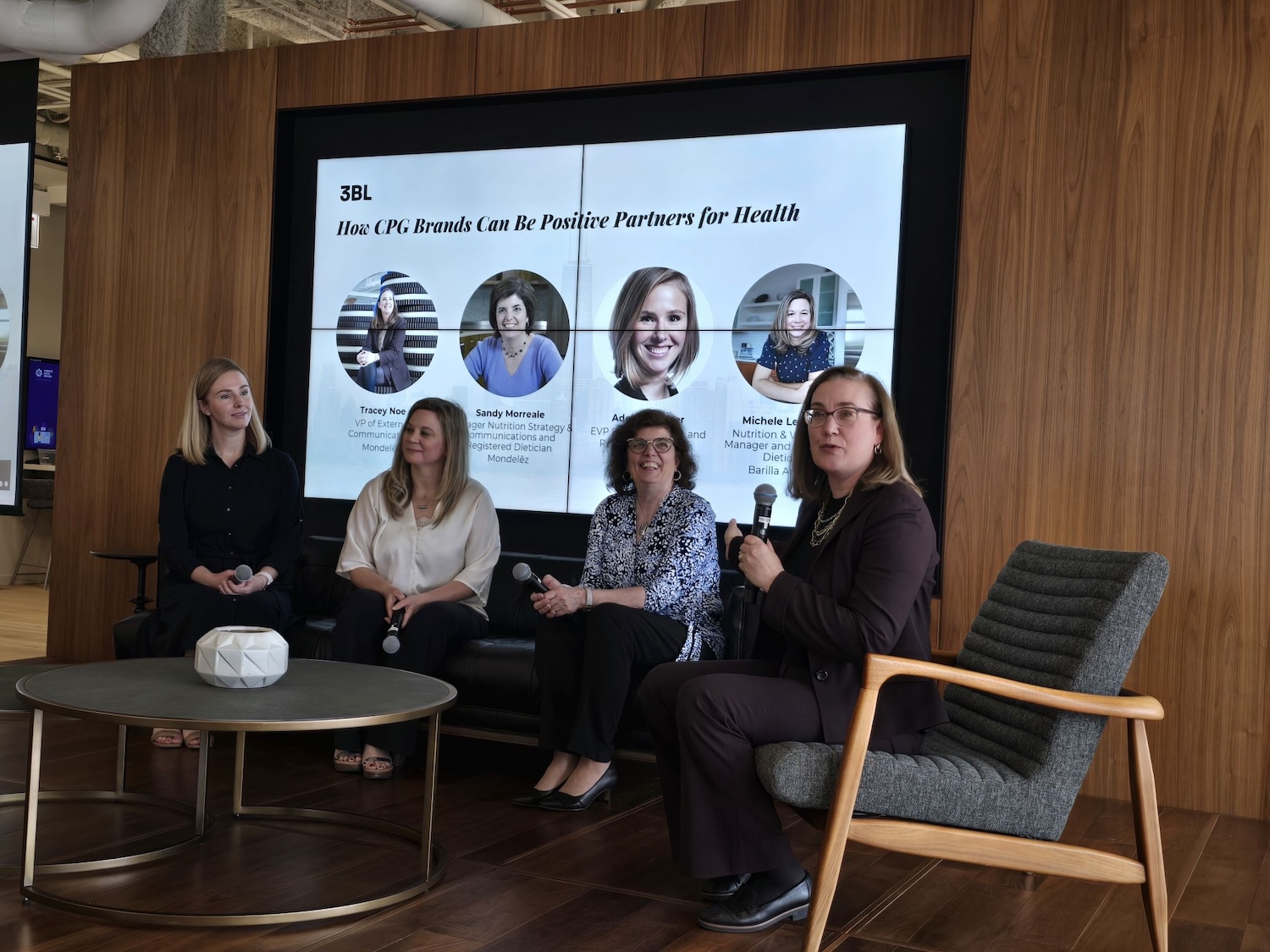
Meeting the consumer where they are and communicating effectively
For brands that are listening, consumer attitudes and behavior can dictate how products are developed and brought to market. For example, while 88 percent of global consumers snack daily, nearly 70 percent say they do so mindfully, with an eye toward nutrition and portion control, according to Mondelēz International’s State of Snacking report. Trends like these can signal to CPG companies a shift from the habits of the past, and those that listen position themselves better in the marketplace.
“When we start to look at why people are snacking, how they're snacking, that can really fuel the types of products that we make,” said Sandy Morreale, a registered dietician and manager of nutrition strategy and communications at Mondelēz International. “They're looking for snack choices that are going to meet their nutrition and needs.”
But to recognize brands for their healthier shifts, consumers first have to know about them. That can be a challenge in itself, as many brands shy away from scientific communications related to things like nutrition for fear of boring or confusing the customer into apathy. As consumer attitudes change, brand leaders are starting to think differently.
“Science can be sexy,” said Michele Lefebvre, a registered dietician and nutrition and wellbeing manager at Barilla America. “We lean away from scientific communications … but it can be sexy. Partnerships with dieticians can help companies understand the ways we can really excite the consumer with this information.”
Leaning into the evidence behind brand health and sustainability claims can also foster trust with consumers. For example, Edelman’s most recent Trust Barometer shows low levels of trust for large multinational companies and their executives, but consumers still rightfully trust scientists and experts to be straightforward in what they say.
“With nutrition specifically, there is a whole lot of pseudoscience out there and disinformation,” said Adelaide Feuer, a registered dietitian and EVP of the Edible specialist agency within Edelman. “For large companies … trusted science needs to be the backbone.”
While accuracy is vital, framing matters, too. For sustainability conversations in particular, “we need to shift away from framing the problem of sustainability and climate as an existential threat that is so large and overpowering,” said Simonne Dubois, director of foresight at Kantar.
“That tries to motivate people from a place of fear, and it actually makes people feel overwhelmed,” she said at the event. “They shut down. And that's not a way to actually drive change. Instead, what we need to do is to start returning agency to consumers and help give them the tools to take small sustainable actions so they feel like their actions have an impact and they are making a difference.”
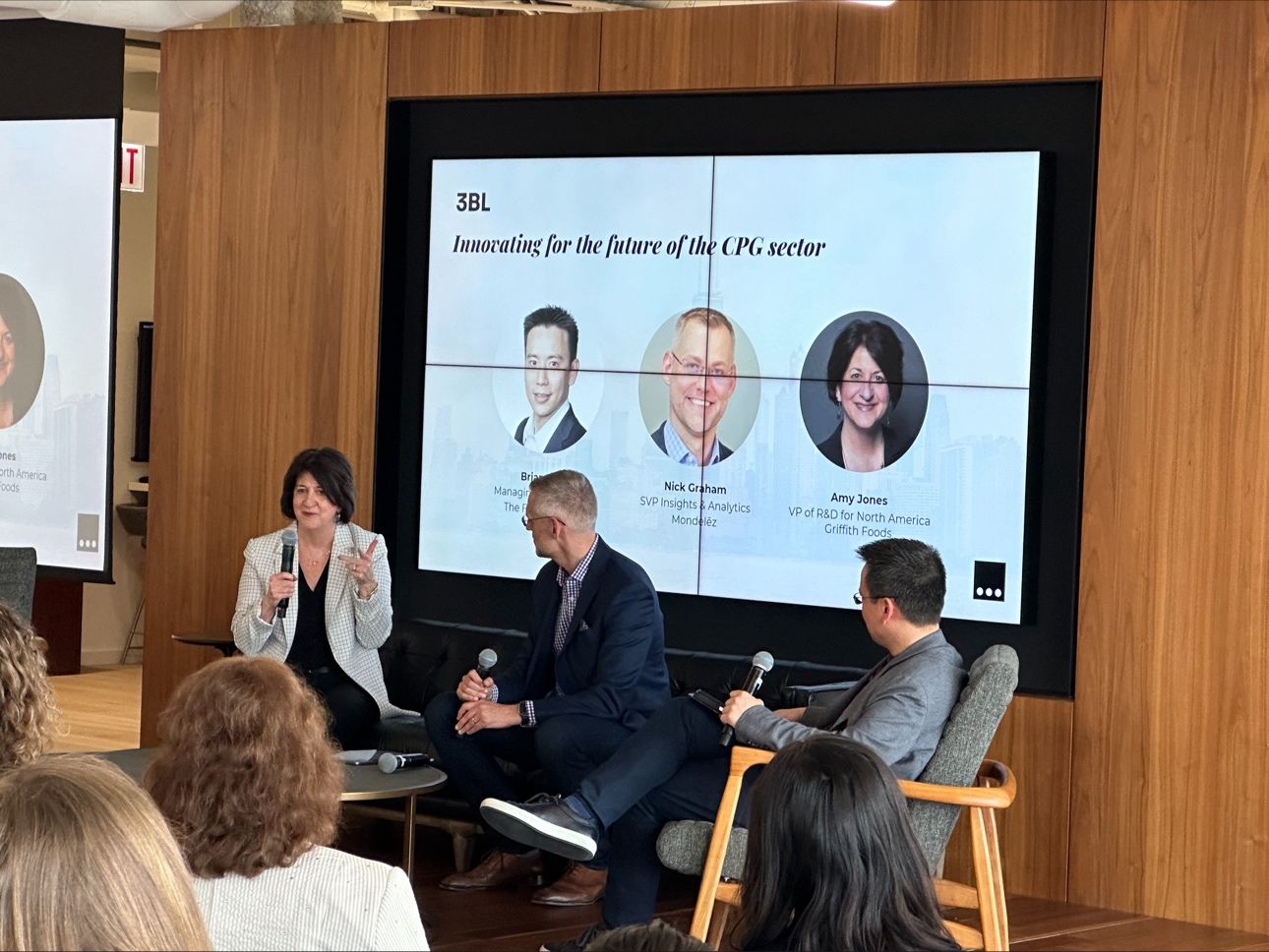
Driving innovations that meet the moment and look toward the future
With consumer demands shifting quickly, brands are challenged to keep up. But those that stand to succeed for the long term also have a firm eye on future trends, demands, and challenges that impact the consumer and the global food system.
“In the pace of the world we live in, especially in what we might call the TikTok environment, there's a space for creative innovations that happen fast,” said Amy Jones, VP of research and development for Griffith Foods in North America. “But when it comes to the moonshot, maybe what we would call breakthrough innovations, these are things that consumers or customers may not even know they need yet.”
This dichotomy is something Nick Graham, SVP of insights and analytics for Mondelēz International, knows well. Mondelēz brands drop new products on an ongoing basis, with a goal to meet each individual with “the right snack, in the right place, at the right time” — whether that’s a shareable bag of Oreos, a gluten-free version, or a gift set for customers to celebrate birthdays and graduations. But the company is also always looking toward what’s next.
“You have to really think ahead: What's the problem? I may not even quite know what the problem is yet,” Graham said. “We have to make sure that those big problems we're trying to solve, we're spending much more time up front to really understand the consumer attitude: What's the tension, what's the problem, and what are the potential solutions we could look at?”
For an ingredients manufacturer like Griffith Foods, that may mean exploring new ways to source sustainably, looking toward technologies like 3D printing to diversify plant-based proteins, or re-approaching time-honored techniques like fermentation to make foods taste better with less salt and sugar. For food companies like Mondelēz International, it may take the form of SnackFutures, an independent innovation and venture hub inside the company that aims to “disrupt the snacking industry.”
Whatever way you slice it, food innovation means trying new things, listening to the customer, and getting comfortable with trying and trying again. “As long as you learn from it and you build from it, you haven't failed,” Graham said.
This event coverage is sponsored by Mondelēz International and produced by the TriplePundit editorial team.
Concerts Can Become More Sustainable: Here's How


(Image: Danny Howe/Unsplash)
Concerts create memories that last a lifetime, but they also generate a whole lot of waste that will last far longer. The peace, love and positivity at these shows come alongside a slew of unsustainable practices.
Live music is a form of entertainment where plastic is always in attendance — more often than not, it’s the star of the show. Beyond single-use utensils, cups and bottles, merchandise tables hawk shrink-wrapped vinyl records, CDs and other plastic souvenirs.
As a concert reviewer for my local newspaper, I attend 20 to 30 concerts a year. I’m often struck by the simple truth that the most sustainable concert practice I could adopt is to not go to concerts at all. But I’m in no rush to quit concerts altogether, and I doubt anyone else is either. As we roll into the season for live music, here are some suggestions for how we can clean up our collective act.
Concertgoers can…
1. Carpool to the venue
If you’re planning to hit a show with friends, arrange to travel together. While this may not negate the carbon footprint of a touring artist traveling to your town or city, you can at least take comfort in the knowledge that you’re doing what you can. There’s no better way to get amped up for a concert than loading into a car with your friends and belting out all the hits you hope to hear at the show. Plus, carpooling with a designated driver is a great way to prevent drinking and driving, allowing everyone to let loose and enjoy the music without worrying about getting home safely after the show.
2. Recycle responsibly
While this one may seem like a no-brainer, it is important to be mindful when disposing of waste. Throwing recyclables in the garbage can is clearly wasteful. But the inverse can be just as bad, if not worse. When trash ends up in recycling bins meant only for cans and bottles, the garbage contaminates these recyclable materials and may prevent them from actually being recycled.
3. Leave no trace
Bring the camping mindset to the tailgate. Leaving trash in a parking lot may not feel the same as leaving it in a forest, but litter of any kind is a nasty calling card to leave behind. At best, someone else will have to clean up after you. At worst, your mess won’t be cleaned up at all, and your local ecosystem will pay the price for your neglect. If you’re tailgating, do everyone a favor and bring two trash bags: one for garbage and one for empties. If there’s nowhere to throw out your waste at the venue, bring it home. A little litter vigilance can go a long way.
Venues should…
1. Shift to reusables
One of the biggest forms of waste at concerts is the single-use plastics served with food and drinks. Implementing reusable cup systems can significantly reduce this plastic footprint. Large venues and entertainment companies are already making the switch by partnering with startups that specialize in reuse.
Live Nation Entertainment rolled out reusable cups, collection bins and washing setups through Turn Systems. Meanwhile the reusable serveware company R World brings reusable cups to venues like the Crypto.com Arena and the Sphere in Las Vegas. Another option is allowing attendees to bring their own refillable bottles, as many music festivals do.
2. Offer bussing options
If venues organized options for attendees to catch a bus to and from concerts, they could significantly scale down their carbon footprints. Plus, more people on buses means less traffic congestion before and after the show and lowers the potential for drunk-driving incidents. Venues wouldn’t have to worry about the revenue lost from parking space sales, as they could replace that with sales for a seat on the concert shuttle bus.
3. Clean up trash collection
Most venues could do better when it comes to collecting garbage and enabling fans to responsibly dispose of trash. The piles of trash and heaps of cans often seen strewn throughout parking lots after big tailgates aren’t solely the fault of fans. More often than not, venues fail to provide enough waste receptacles. When the limited receptacles overflow, fans are left with no place to responsibly dispose of waste. Other times, the receptacles are not easily accessible, their location is not clearly indicated, or they lack clear signage distinguishing between garbage and recycling. Of all the sustainability problems that concert venues need to address, this is an avoidable problem that doesn’t require much effort to solve.
4. Report emissions and sustainability efforts
Big festivals such as Lollapalooza and Bonnaroo are making sustainability partnerships and commitments while publishing breakdowns of their efforts. Local venues can follow suit by mapping out their sustainability goals, their progress and even their current emissions. While smaller venues lack the resources and revenues of these national festivals, they nonetheless can take proportionate action to reduce their carbon footprints and help make live music a more positive experience for all.
This story is part of Entertainment Month in TriplePundit's Sustainable Living Challenge, where we unpack simple ways to save money and reduce environmental impact in the ways we have fun. Learn more and take the challenge here.
What Makes a 'Sustainable' Restaurant? Labels to Look For


(Image: Jari Hytönen/Unsplash)
It’s easy to spot vegan, vegetarian and gluten-free options by scanning restaurant menus for the corresponding letters: VG, V and GF. Common sustainable restaurant labels that feature a blue fish, a frog or an acronym in a circle, on the other hand, probably aren’t self-explanatory enough to be the deciding factor as you debate between the veggie burger and the grilled salmon.
Third-party certification badges play a crucial role in verifying sustainability claims, but they're only helpful when you know what they mean. Explaining the criteria behind these labels isn’t as easy as tacking “VG = vegan” to the bottom of the page, but once you learn to recognize them, you'll start to notice them more and more at restaurants that tout themselves as sustainable. Read on to learn how to decode these menu messages at a sustainable restaurant near you.
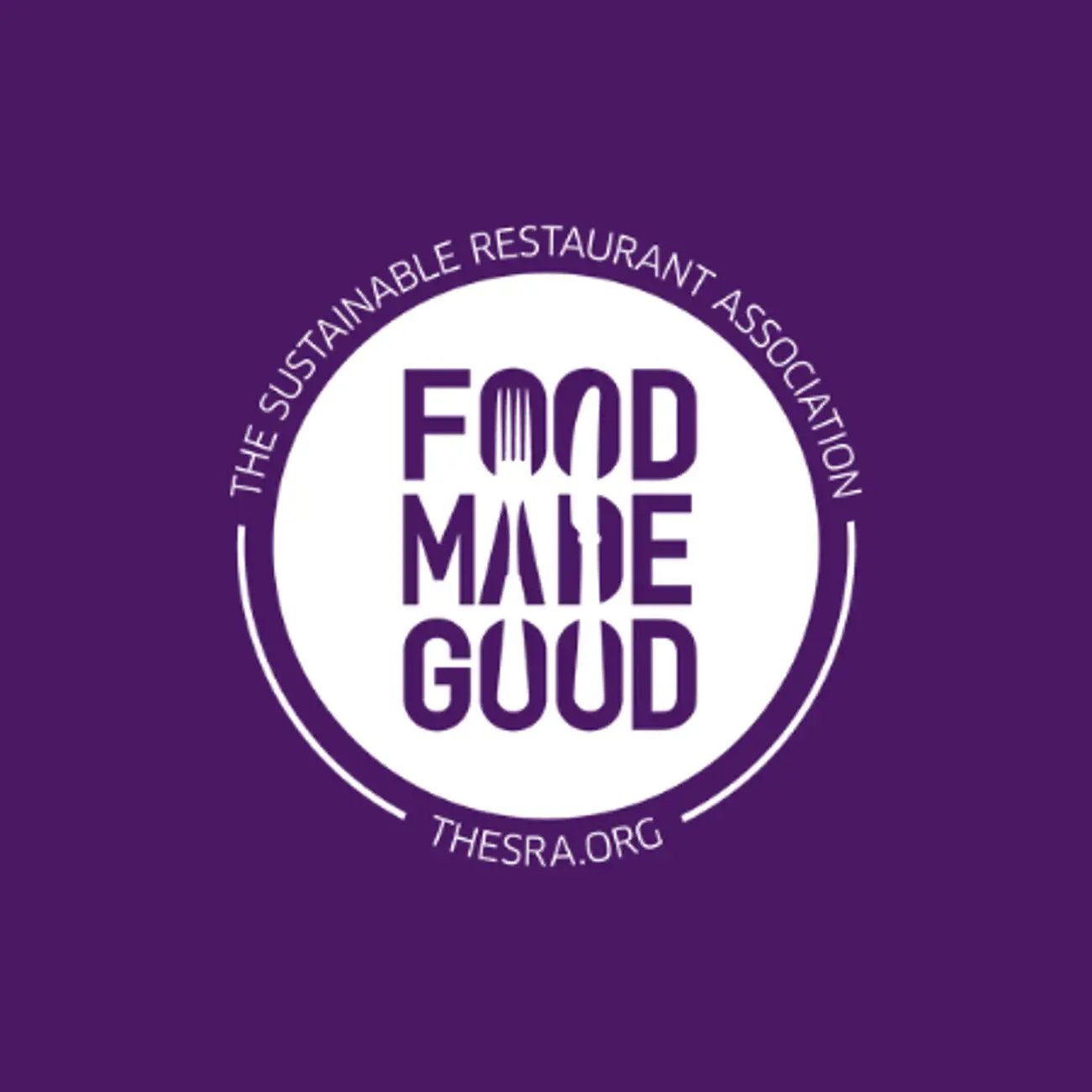
The Food Made Good Standard
“The Food Made Good Standard is the only global sustainability certification designed especially for the foodservice industry,” according to the Sustainable Restaurant Association, which runs the program. Requirements span all aspects of how restaurants do business, including sourcing, impacts on society and impacts on the environment.
Sourcing requirements, for example, include increasing the number of plant-based options on offer and having long-term, mutually beneficial relationships with farmers and fishers. The society pillar includes treating staff fairly and making the business accessible to all community members, while the environmental requirements include reducing the restaurant’s environmental footprint and food waste.
More than 10,500 kitchens across 73 countries earned this accreditation, according to the Sustainable Restaurant Association.
The Coolfood Pledge
Organizations that join the Coolfood Pledge commit to reducing food-related greenhouse gas emissions by 25 percent by 2030, and the Coolfood team helps to guide them through the process. The nonprofit World Resources Institute analyzes the food that participating kitchens purchase each year to determine their climate impacts, and each restaurant receives an annual report that breaks down their emissions by food type and compares yearly trends.
The initiative also offers a Coolfood Meals badge to designate climate-friendly menu items. To earn the badge, a meal’s carbon footprint must align with a threshold established by the World Resource Institute to meet the emission reduction goals set in the global Paris Agreement on climate change. For a breakfast in the United States, that’s 3.81 kilograms of carbon emissions per portion.
In total, organizations taking part in the pledge serve 2.1 billion meals per year. The full list is available here.

Green Restaurant Association certification and badges
The Green Restaurant Association standards are based on over 30 years of restaurant and environmental research. They were designed to measure restaurants’ environmental accomplishments while encouraging them to continue improving their efforts. Participating restaurants earn “GreenPoints” based on performance in categories like energy use, waste, chemicals, pollution, education and transparency.
For example, a restaurant earns one point in the food category for growing greens or herbs on-site. It earns 15 points for using seafood recommended by the sustainable seafood certifiers Seafood Watch and Ocean Wise.
Once enough points are earned across different categories, it becomes a Certified Green Restaurant. Obtaining more points leads to a higher sustainable restaurant certification level and additional badges for things like reaching near-zero waste or using clean chemicals.
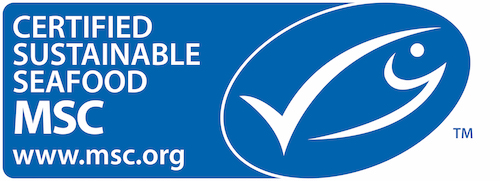
The MSC blue fish label
Seafood products bearing the blue fish label are certified by the Marine Stewardship Council. It's the most recognized seafood certification in the world, and you'll see the label on restaurant menus and at grocery stores.
Independent surveillance audits and DNA testing are used to prove the seafood comes from sustainable sources. Sustainable fisheries that meet the MSC Fisheries Standard leave enough fish in the sea to reproduce, their environmental impact is minimal and carefully managed, they follow relevant laws, and they can respond quickly to changes in the industry status quo. The standards are developed and reviewed with scientists, industry experts and conservation groups.
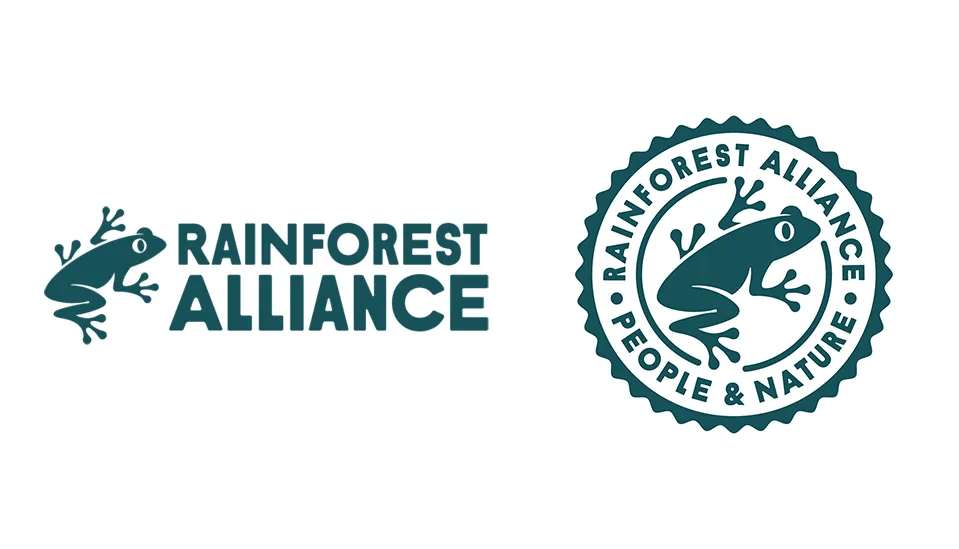
Rainforest Alliance Certification
Seeing this little blue frog on a product or restaurant menu means the company prioritizes social, economic and environmental sustainability in its supply chain by meeting the Rainforest Alliance Sustainable Agriculture Standard. This program is committed to protecting forests, the climate, human rights and farmers’ livelihoods.
For farms, that means creating safe, fair working conditions and enriching the land through regenerative agricultural practices, such as not tilling fields and avoiding synthetic fertilizers. For other businesses, it means committing to “responsible business practices and transparency from farm to shelf,” according to the alliance.
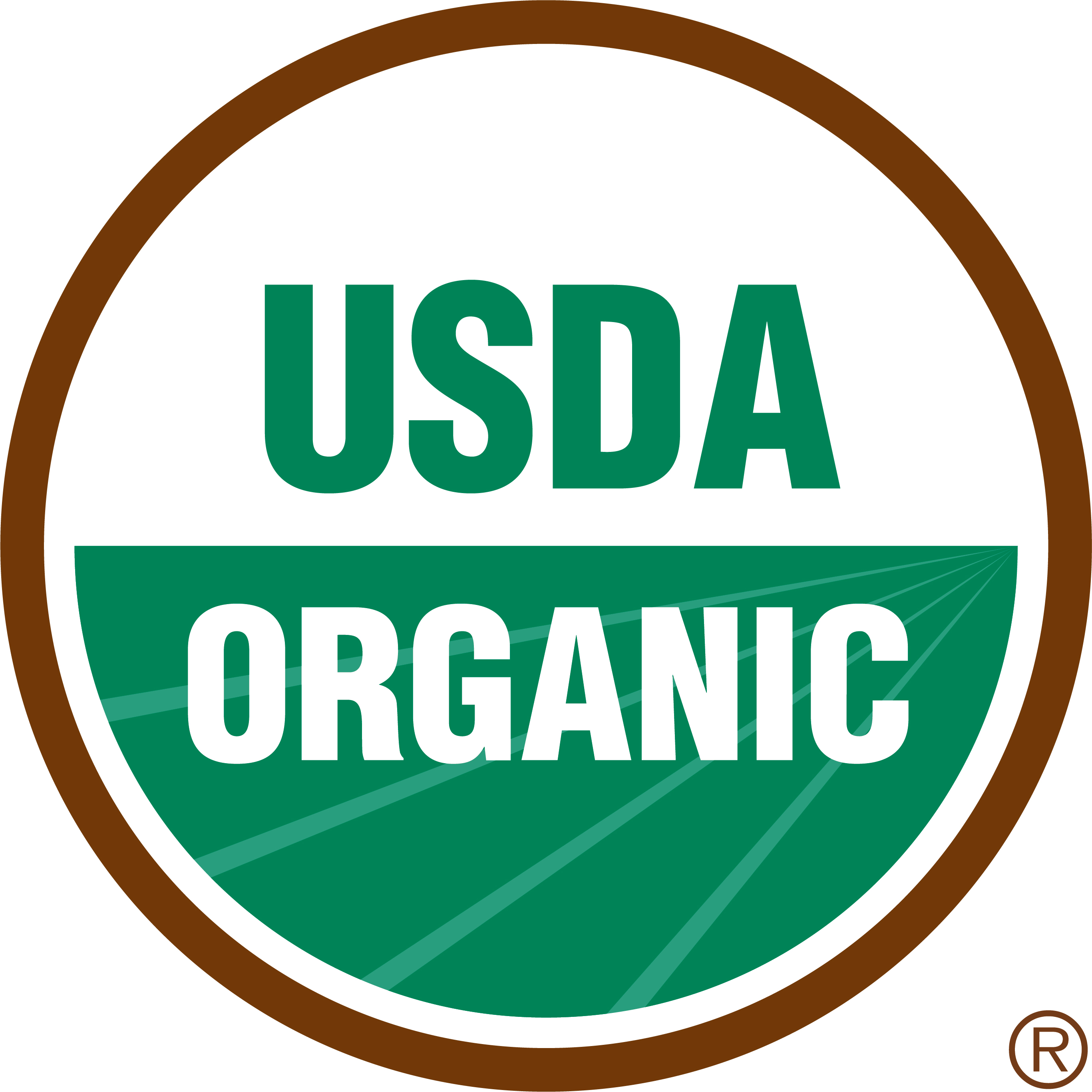
USDA Organic Certification
Different requirements are set for the United States Department of Agriculture (USDA) organic seal based on the product. In general, the practices used to produce certified organic foods must cycle resources, conserve biodiversity and preserve ecological balance. Produce and grains, for example, can only be grown with natural fertilizers, eco-friendly pest control, and agricultural practices that protect soil and water, like crop rotation and planting cover crops.
To earn the certification, the farm or business’ practices are reviewed and approved by an accredited certifying agent. Organizations that pass are inspected again each year, and products are traced from the farm to the store.
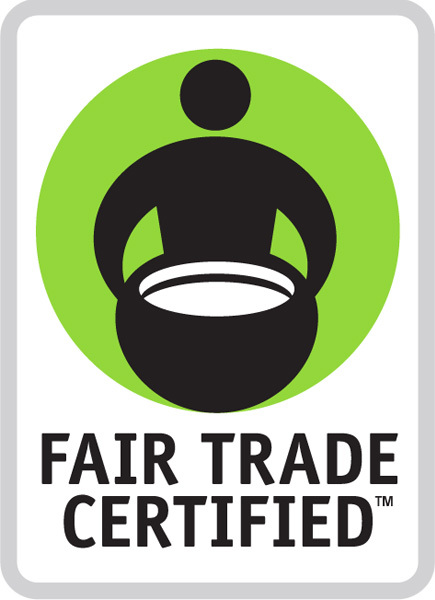
Fair Trade Certified license
The Fair Trade Certified license is given to businesses that act as importers, exporters, manufacturers, distributors, or other parts of the supply chain. The label is designed to put people and the planet first, ensuring that products are “grown, harvested, manufactured, and traded in ways that improve livelihoods and protect the environment,” according to the organization. It supports safe working conditions, environmental protection, sustainable livelihoods and community development funds.
To earn the license, businesses must meet Fair Trade USA’s Trade Standard, which focuses on social, environmental and economic requirements. Among other tasks, those seeking certification need to meet labor and environmental laws, meet minimum payment requirements and regularly report on their transactions.
Be wary of vague claims
Third-party verification are created to ensure that sustainability claims are true. Be wary of vague statements like “eco-friendly” and “sustainable,” which are immeasurable and don’t require scientific proof. Even terms like “locally grown” are unregulated.
The best way to assess these claims is at the source. If you're curious about a self-proclaimed sustainable restaurant nearby, check out their website or menu for a transparent explanation, or ask about things like how they work with farmers or source their ingredients on your next visit.
This story is part of Entertainment Month in TriplePundit's Sustainable Living Challenge, where we unpack simple ways to save money and reduce environmental impact in the ways we have fun. Learn more and take the challenge here.
Shaking It Up: Shake Shack Embraces Carbon Neutral Milk
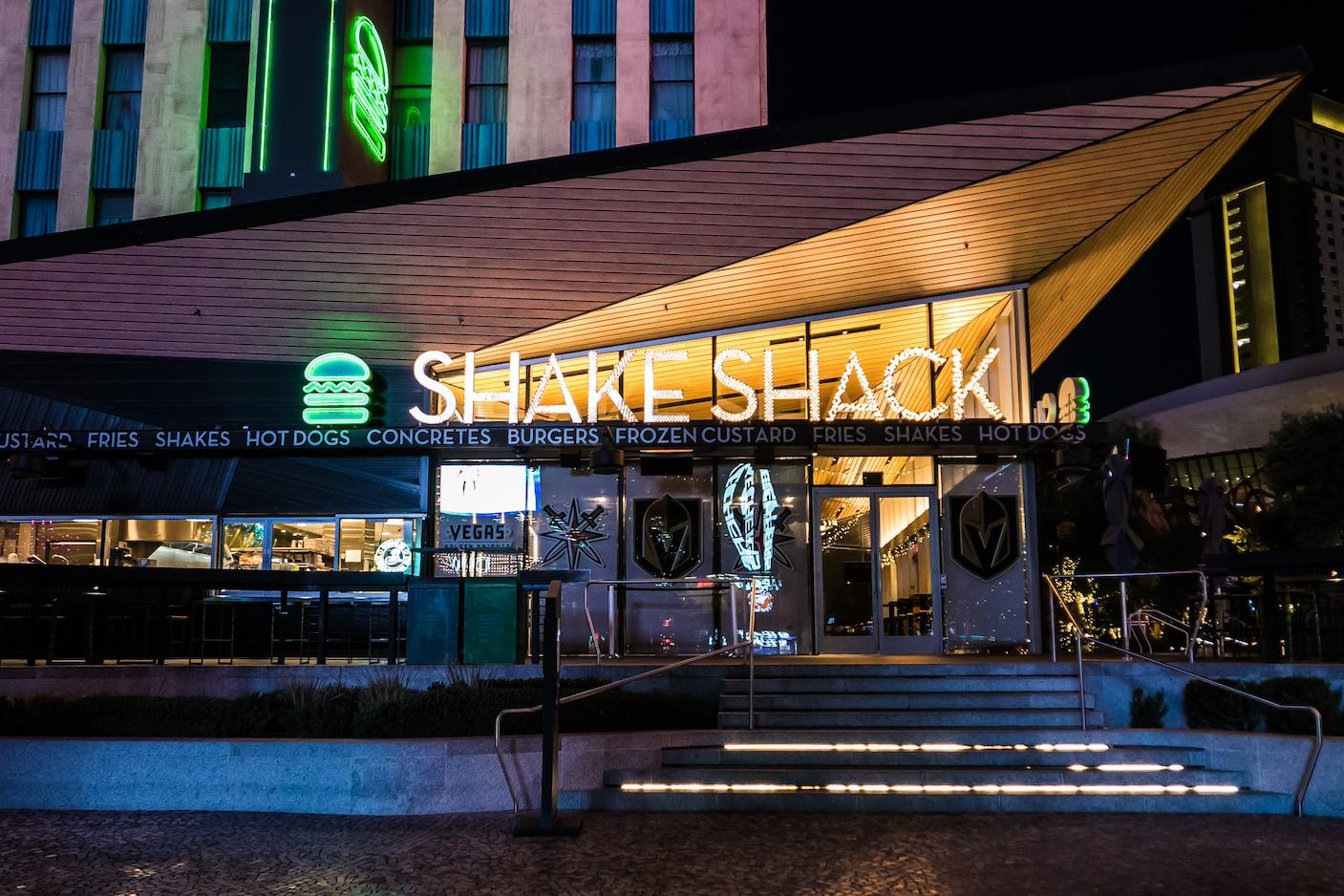
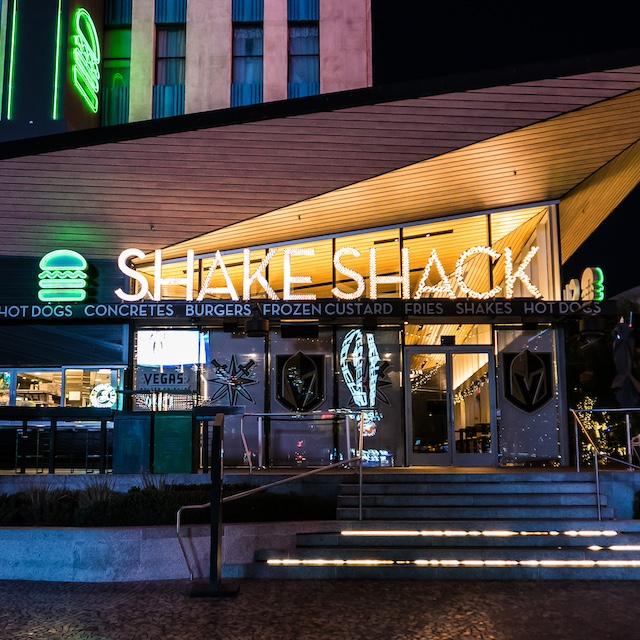
(Image: Jim Nix/Flickr)
Once a mixture of eggs, cream and whiskey in the 1800s, the kid-friendly milkshake of today has come a long way. Yet, despite its innocuous composition, that strawberry swirl isn’t all sunshine and roses.
Dairy is known for its environmental impact, especially its fairly sizable carbon footprint. The industry contributes around 2 percent of the total greenhouse gas emissions in the U.S., nearly one-fifth of agriculture’s total emissions. While the dairy industry has made strides — reducing its carbon footprint by 45 percent from 1964 to 2014 — there’s still room for improvement.
Businesses like Shake Shack are stepping up to make milk more eco-friendly. Recently, the restaurant chain piloted milk from Neutral Foods, the first carbon neutral food company in the U.S., in its signature shakes. Its carbon neutral dairy line also helps farmers, meaning that strawberry frosted donut shake just got a little sweeter for the planet.
Milk’s environmental footprint
At first glance, dairy might not seem so bad for the environment, but just like meat, it starts with cows and other livestock. Cows, which produce the majority of our milk, need a lot of water and energy to create it. The dairy industry uses over three percent of water and nearly three percent of land in the U.S., requiring many more resources than plant-based alternatives. Nonetheless, the industry has greatly reduced its environmental footprint from the 1940s — using 90 percent less land, 65 percent less water and 77 percent less feed by the early 2000s.
Besides resource use, dairy farming also emits greenhouse gases.
“Basically on dairy farms, the emissions come from three major sources,” said Jake Schmitz, a carbon reduction manager at Neutral. “That would be from the manure storage, from the enteric cow burps, and then from growing crops to feed the cows.”
Enteric refers to the intestines. Animals like cattle, sheep and goats release methane, a potent greenhouse gas, during digestion. Methane is 28 times better at trapping heat in the atmosphere than carbon dioxide and livestock are the single largest agricultural source of these emissions.
Dairy farms can also pollute the air, along with groundwater and freshwater. In some cases, this can lead to algal blooms that harm aquatic life.
Carbon neutral milkshakes
Despite these drawbacks, Shake Shack is reaching for the silver lining in that ice cream cone. The company first partnered with Neutral in 2022, launching its carbon-neutral whole milk in a few locations. Now, they’re expanding to 90 restaurants in the Northeastern U.S.
“Knowing we sell shakes, and a lot of them, at Shake Shack, we thought it would make sense to address our fluid dairy supply, which is a really high-impact ingredient,” said Corey Blumenthal, a sustainability specialist at Shake Shack. “Everybody knows dairy and meat are very carbon intense … We were really looking hard for a partner who would be able to continue to help us serve the shakes that we know and love but with more sustainability, and that's where I came across Neutral.”
Neutral is certified by SCS Global Services, which confirms the carbon footprint of their operations, emission reductions and carbon offsets each year. So far, the partnership has helped lower Shake Shack’s emissions.
“By purchasing Neutral milk versus conventional milk, we've avoided around 375 metric tons of carbon dioxide equivalent [emissions],” Blumenthal said. “Which, using the U.S. Environmental Protection Agency's Greenhouse Gas Equivalency Calculator, is actually equivalent to the carbon dioxide emissions from burning 413 pounds of coal — so a huge impact on the greenhouse gases that are emitted and associated with the ingredients that we're sourcing.”
Ideally, that’s just the start. Shake Shack’s goal is to further expand its partnership with Neutral, Blumenthal said.
“It's very fascinating when I go to farms and I say, ‘Hey your milk is going to be in Shack Shake’s milkshakes,’” Schmitz said. “It gives them a little bit of pride about that and they get excited about it … It really does help them to start brainstorming to see what they can do next: ‘How can I be a little bit better than I was yesterday?’”
Shake Shack also has other sustainability initiatives to lower their carbon footprint. For instance, they’ve recycled around 2 million pounds of cooking oil and donated 3,000 pounds of surplus ingredients to avoid food waste. They’re also introducing more sustainable packaging, including carbon-neutral straws, and installing solar panels at certain locations.
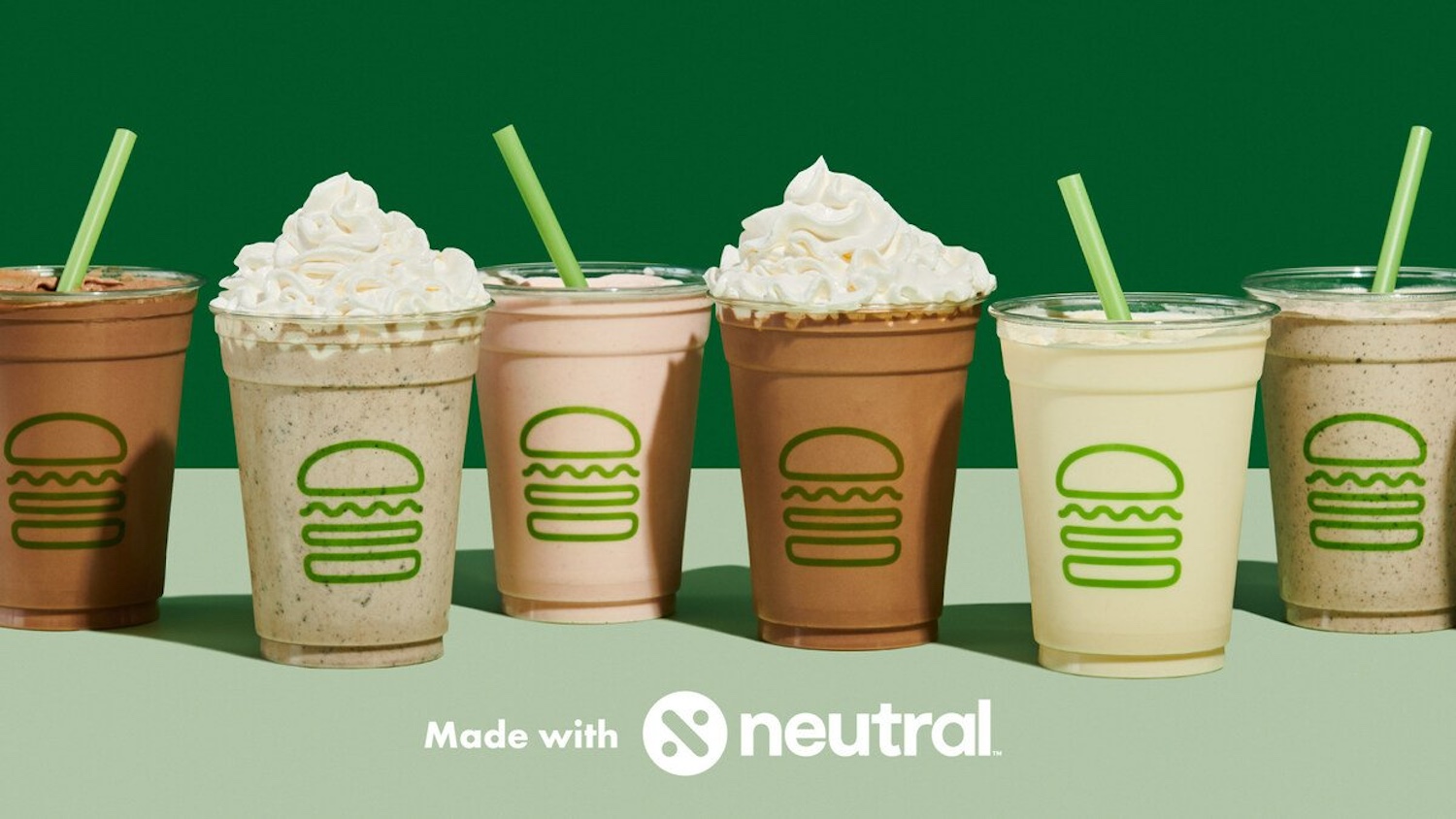
Neutral's approach
For its part, Neutral is tackling the world of cows, curds and cream with a passion for sustainability. It uses a two-fold approach when partnering with farmers: directly reducing emissions from dairy farms and then offsetting any remaining ones.
“When we go on to a farm, I evaluate how the farm’s infrastructure is set up, how management is happening, and then I just evaluate from there to look for interventions that would have the biggest impact for the farmer, and also deliver some co-benefits for the farmer,” Schmitz said.
The company helps slash a farm’s emissions through several methods and offers financial assistance.
“One product that I love a lot, and call it my gateway intervention, is this essential oil product called Agolin,” Schmitz said. “It's basically a blend of three essential oils.”
Small amounts of the mixture are fed to the cows to help reduce methane emissions from their burps.
“Inside the rumen [a stomach compartment], that environment creates the perfect environment for a little bacteria called methanogens, and those methanogens produce methane,” Schmitz said. “So what this essential oil does, is it kills some of those methanogens. Not all of them, but some of them. And those methanogens are basically just stealing feed from the cow.”
The product reduces methane emissions by around 8 percent and helps the cows by increasing milk production, body condition and reproductive rates.
On the other end of things, manure and how it’s managed makes a difference.
Farmers often store manure in lagoons for water quality reasons, Schmitz said. But this causes other environmental issues.
“Manure is a big problem because anytime you get solids and liquids in the same environment, like in a lagoon, then you have those methanogens again,” Schmitz said. “They thrive in that environment, and they just create tons of methane.”
If manure is composted in dry conditions with oxygen, it releases less methane and more carbon dioxide. While both gases contribute to global warming, methane is much more potent.
“What I'm trying to do is get that manure back out of the lagoons and into either a dry stack situation, a daily spread onto productive agricultural land, or through a solid-liquid separator with the projects that we're developing right now with some farmers in New York,” Schmitz said.
As its name suggests, the solid-liquid separators divide the liquid and solid parts of the manure. Besides the greenhouse gas reduction, farmers can also spread those solids as fertilizer on fields several miles away, Schmitz said. As you can imagine, moving large amounts of liquid muck is tricky.
Neutral has a few other projects in the dairy pipeline, such as adopting electric-powered vehicles on farms, reducing fertilizer use, and using feed and cover crops to uptake carbon and limit fertilizer and water use.
In the last step of working with farmers, the company offsets any lingering emissions by investing in green energy projects on dairy farms. These farms capture biogas and methane released from manure and combust them to create electricity. The operations are verified by the Climate Action Reserve, American Carbon Registry and Verra to ensure the reductions are audited and permanent.
The future of frappes
Despite the surging popularity of plant-based alternatives, milk sales in the U.S. are still high, reaching over $59 billion in 2022. And the global dairy market is predicted to continue growing. Sourcing sustainable ingredients is a great way for businesses to go green, while also being an easy choice for consumers.
“Consumers are able to continue to get what they would have gotten before, but know that Shake Shack has done the work on the back end to make it a more sustainable product for them,” Blumenthal said.
If that product comes in the form of a chocolate salted caramel shake, all the better.
